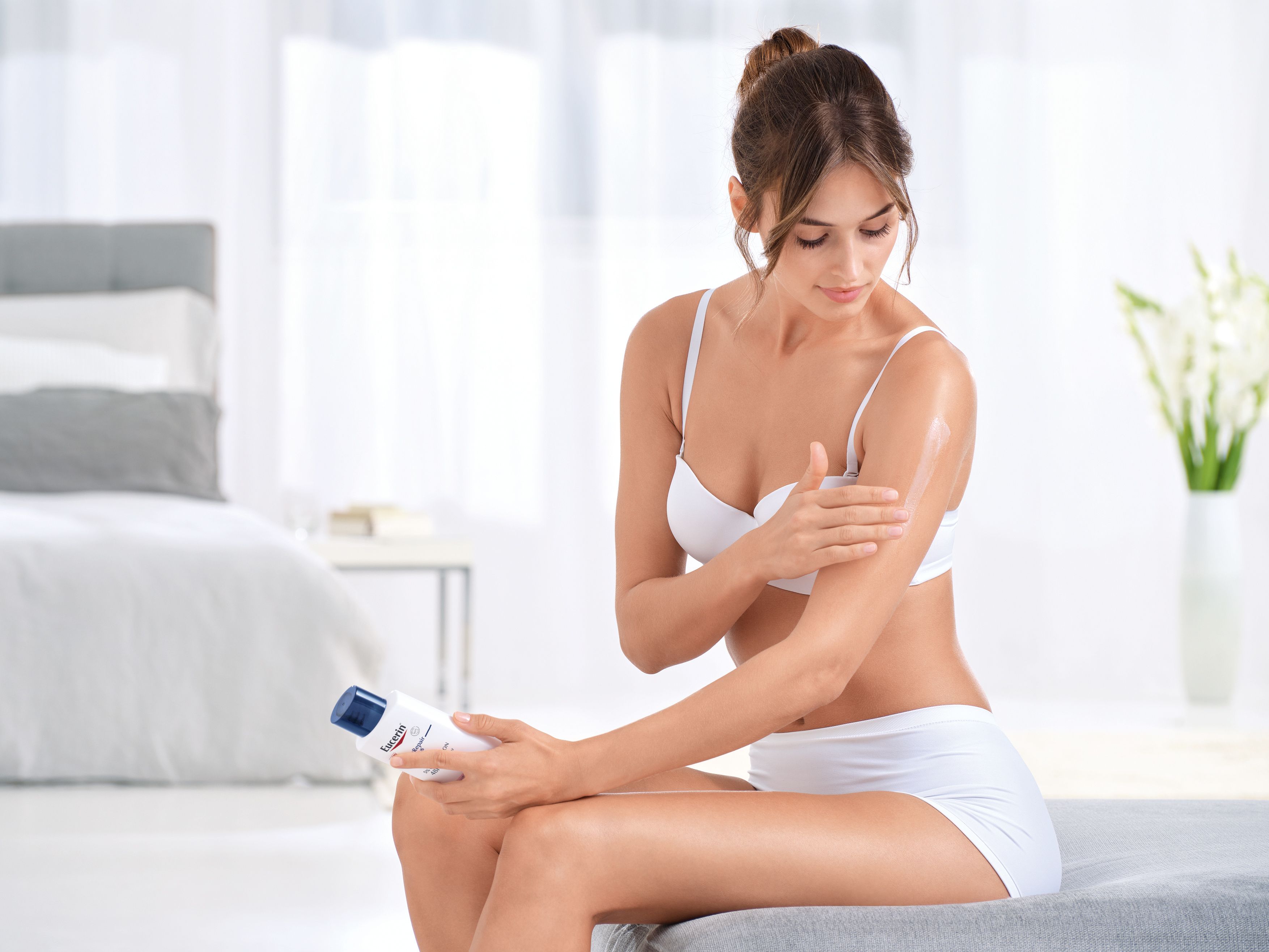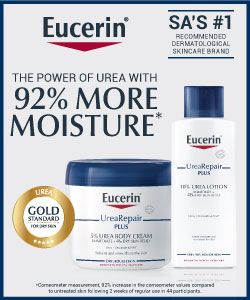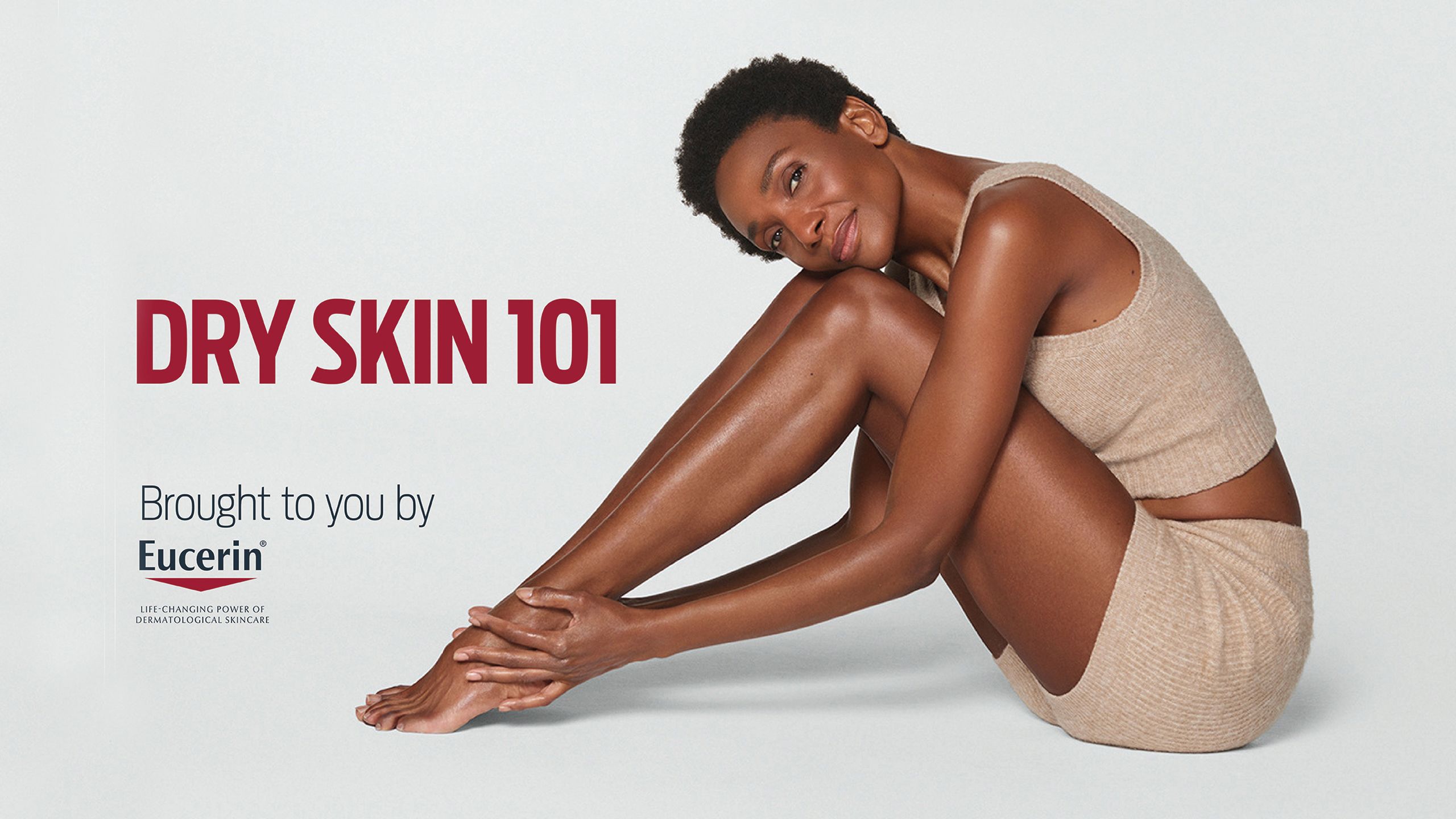
Tight skin, chapped lips, rough elbows, ashy knees, scaly shins, hangnails, cracked heels, itching, and inflammation … does dryness make you just want to crawl out of your skin?
When we don’t feel or look our best, it can amp up self-consciousness, wear away self-esteem, and even make us shy away from touch. But whether you’re going through a rough patch or need extra care because of medical conditions, Eucerin has help and hope to restore your skin, for soft, touchable confidence.
Eucerin is South Africa’s #1 recommended dermatological skincare brand. For over 100 years, Eucerin has worked hand-in-hand with dermatologist and pharmacist partners around the world to understand how we can best protect, nourish and care for our skin. We have dedicated ourselves to researching and innovating in the field of skin science. The Eucerin UreaRepair range contains active ingredients that’ll give us targeted, instant relief for dry skin and its symptoms. And with continued use, Eucerin UreaRepair can help restore the natural radiance of our healthy skin.
Understanding which factors lead to dry skin will help us prevent and treat it, through lifestyle change and the targeted use of skincare products like the Eucerin UreaRepair range. So get to grips with your dry skin, and get back your glow!

Healthy skin
Healthy skin isn’t just the body’s gorgeous gift wrap, it’s our first line of defence. Here are four amazing things that our skin cells produce every day to keep us safe:
- Antibacterial and antifungal agents like lauric acid and sapienic acid.
- Melanin and proteins that protect us from cell-damaging ultraviolet (UV) radiation.
- Natural moisturising factors (NMFs) like urea, pyrrolidone carboxylic acid, lactate (lactic acid) and hyaluronic acid that bond with moisture to keep skin soft and supple.
- Three surface lipids – ceramides, free fatty acids and cholesterol – which work to hold our skin cells together, maintaining the skin’s barrier function to keep moisture in and harmful substances out.
How does skin become dry?
When the skin’s processes are disrupted (by environmental factors in the world around us, or internal factors like the body’s autoimmune responses), our skin stops being able to produce enough of the NMFs and lipids it needs to protect us. When we don’t have enough surface lipids, such as ceramides, moisture evaporates from the skin, and the vital moisture-binding substances, the NMFs, are easily lost. NMFs don’t just draw moisture from the environment, they bond with moisture in the networks deeper in the skin. So, without enough NMFs, the natural upward flow of moisture into the upper skin layers is disrupted. The result is increasingly dry skin that’s less able to protect itself and the rest of the body.
10 CAUSES OF DRY SKIN
Environmental factors
The six main environmental triggers that can lead to dry skin are:
- The weather: Harsh weather conditions and seasonal changes in temperature and humidity can cause dry skin, depending on what your body is sensitive to.
- The sun: Exposure to UV light can also lead to dry skin, since it increases the rate of skin ageing. Read more about age-induced dryness.
- Improper skin care: Skincare products that contain harsh chemicals can strip away the skin’s protective oils, as can prolonged exposure to hot water, and over exfoliation. Read more about gentle cleansing and safe skincare routines.
- Medication: Certain medical treatments such as dialysis, radiation therapy and chemotherapy are known to cause dry skin, as do many acne treatments and any medications that have a diuretic effect (including blood pressure medications). Always check with a doctor or pharmacist if you are concerned that a medication might contribute to dry skin.
- Diet: A lack of nutrients, unsaturated fatty acids, and vitamins can contribute to dry skin. Vitamin C and E are also involved in maintaining healthy skin.
- Not drinking enough water: Our skin draws and uses about half a litre of water a day from the deeper skin layers in a process called trans-epidermal water loss (TEWL). We also lose water every day in the form of perspiration.
Internal factors
The four main internal factors that cause dryness are:
- Genetics: Moisture levels in the skin are partly determined by genetics. Under identical conditions, different people will display different skin types, so some people are just more susceptible to dry skin.
- Skin conditions: Eczema (atopic dermatitis), diabetes, ichthyosis, and psoriasis all have a genetic component and involve dry skin symptoms. Read more about the causes, signs and treatment of diseases like psoriasis and eczema.
- Hormones: Hormonal changes during puberty, pregnancy or menopause can lead to dry skin.
- Age: As we age, our skin’s glands naturally become less productive. Fewer lipids are available, the skin loses its elasticity, density decreases, and the skin slowly loses its youthful look. Read more about age-induced dryness.
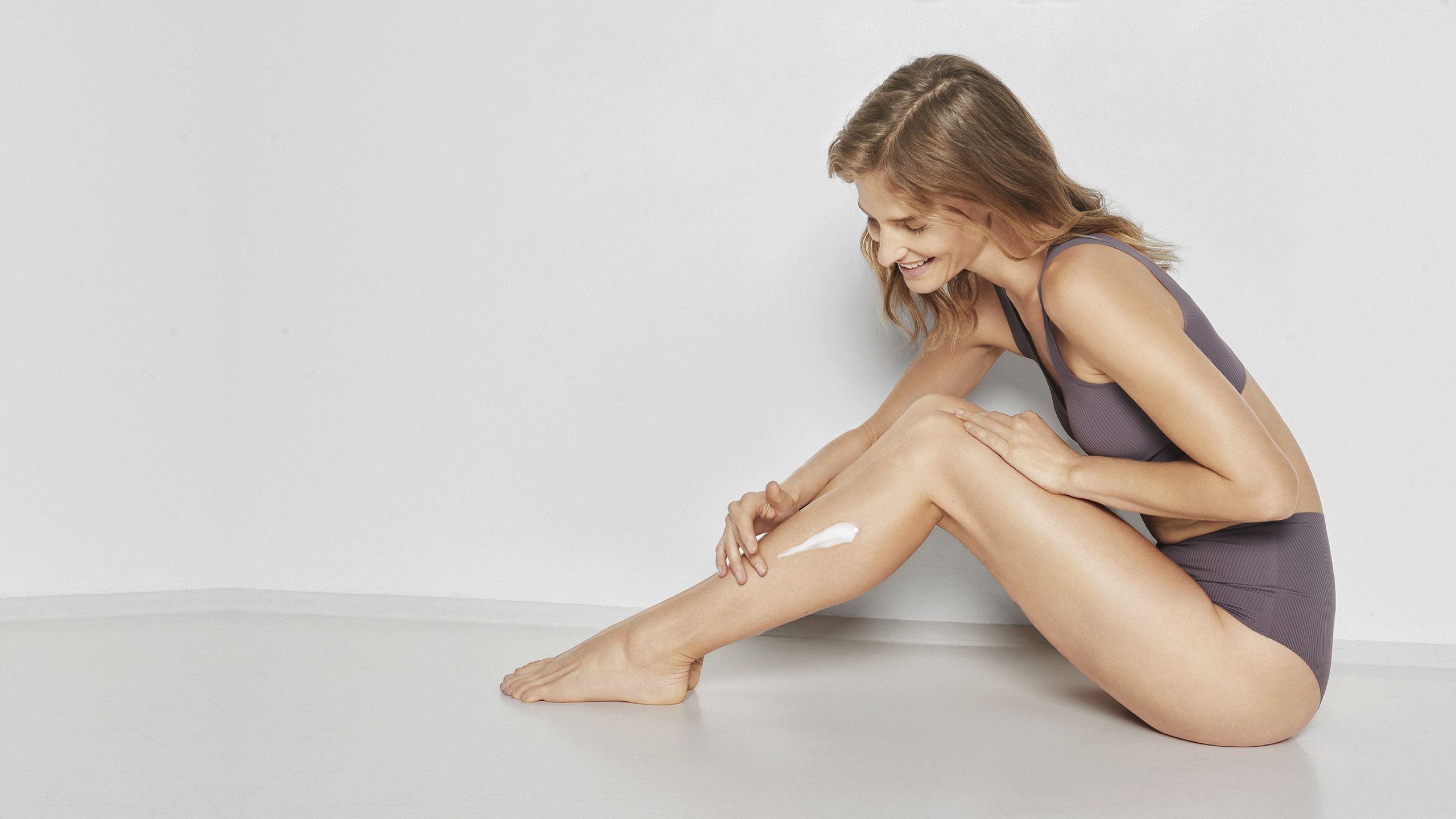
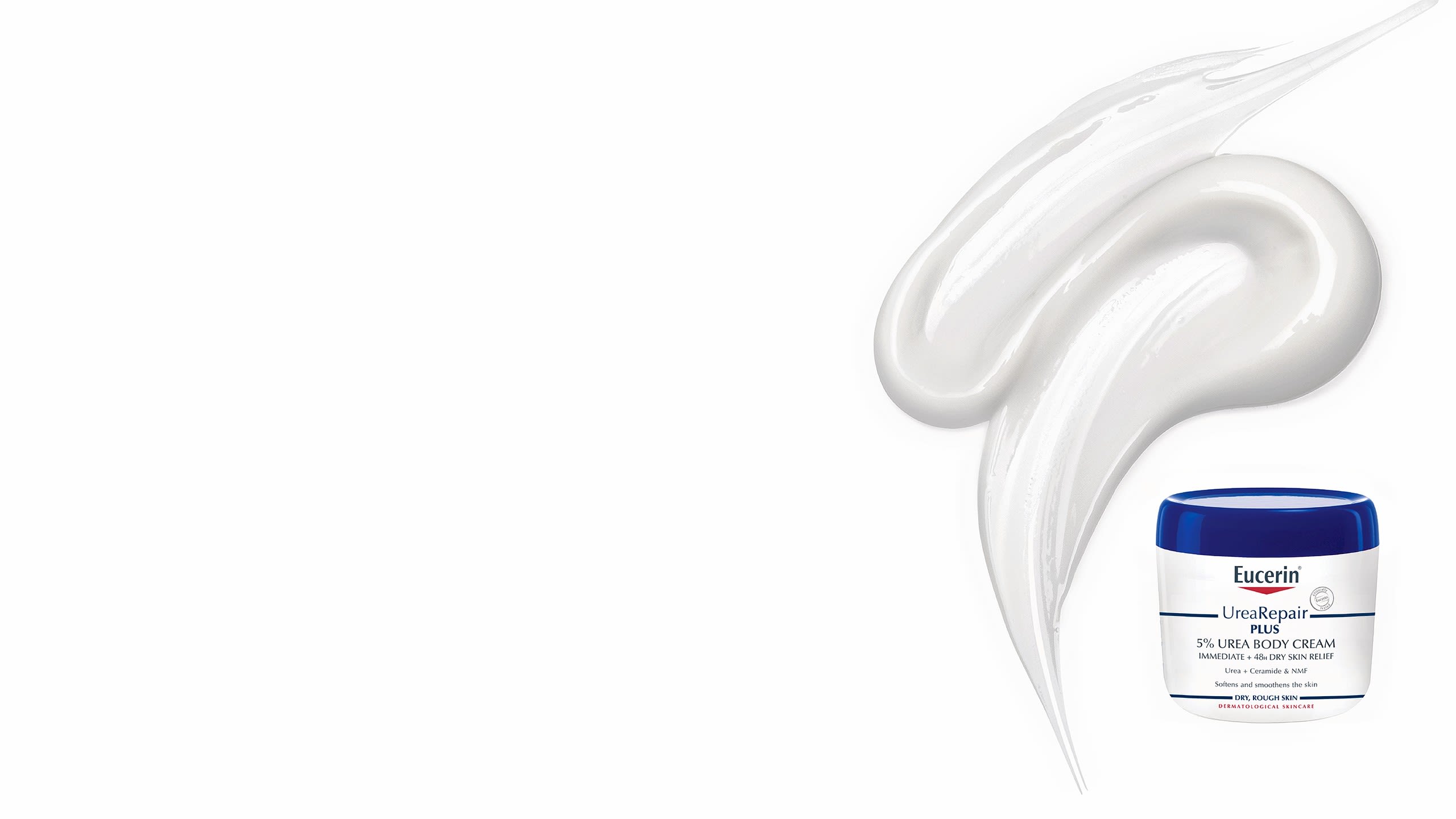

Dry skin can occur anywhere on the body, but certain areas are more likely to become very dry or even rough and cracked, as can often be seen with the soles of the feet and elbows. This happens when the dryness penetrates into the deeper layers of the skin. If left untreated, skin dryness can become progressively more severe in three main stages: mildly dry skin, very dry skin, and extremely dry skin.
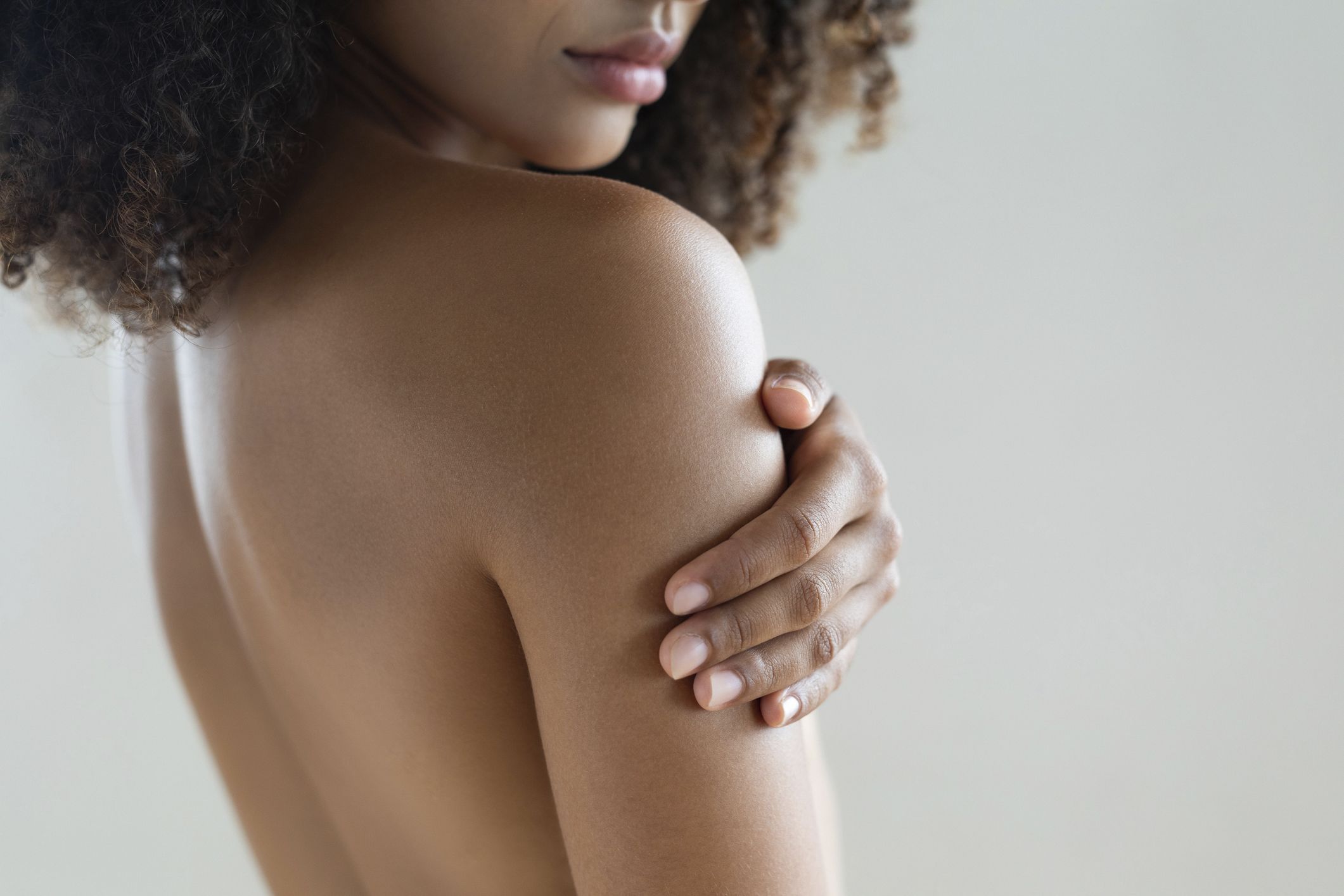
The 3 degrees of dry skin
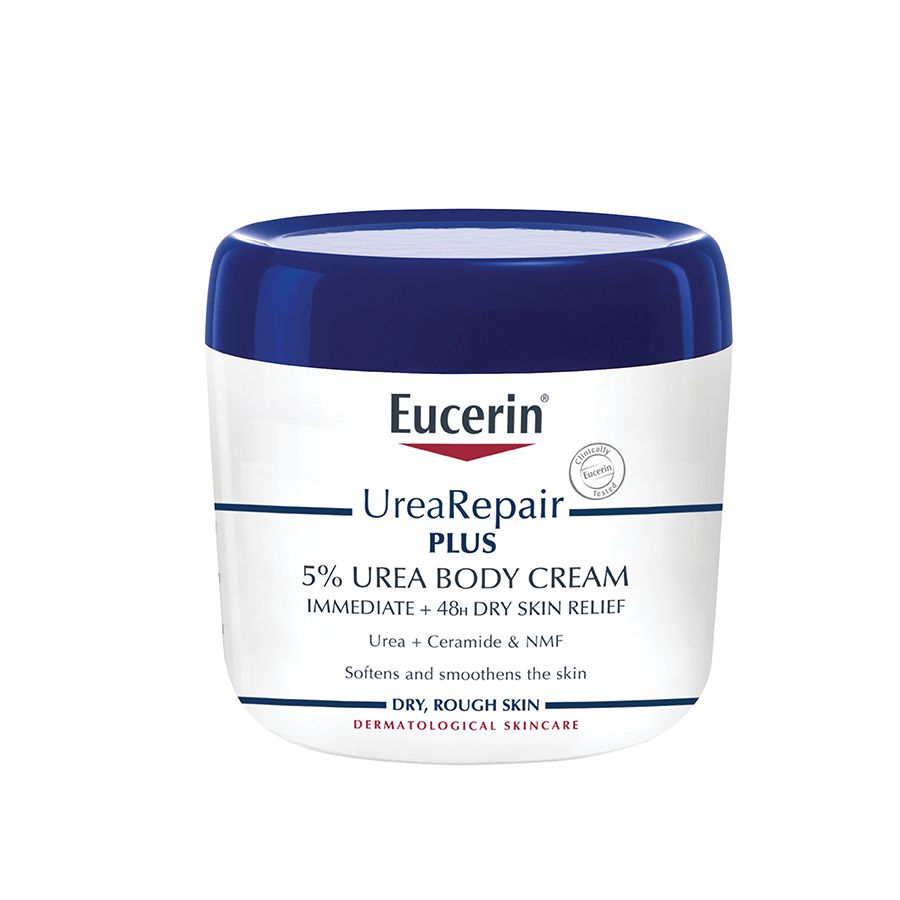
Mildly dry skin
Mildly dry skin can feel tight, brittle and may appear dull and slightly to moderately rough. Darker skin will look ashy and we can scratch a white line across paler skin. Skin elasticity is also low. Often the first signs of dryness do not cause much discomfort, but ignoring them will likely lead to more severe dryness.
The Eucerin solution: UreaRepair PLUS 5% Urea Body Cream
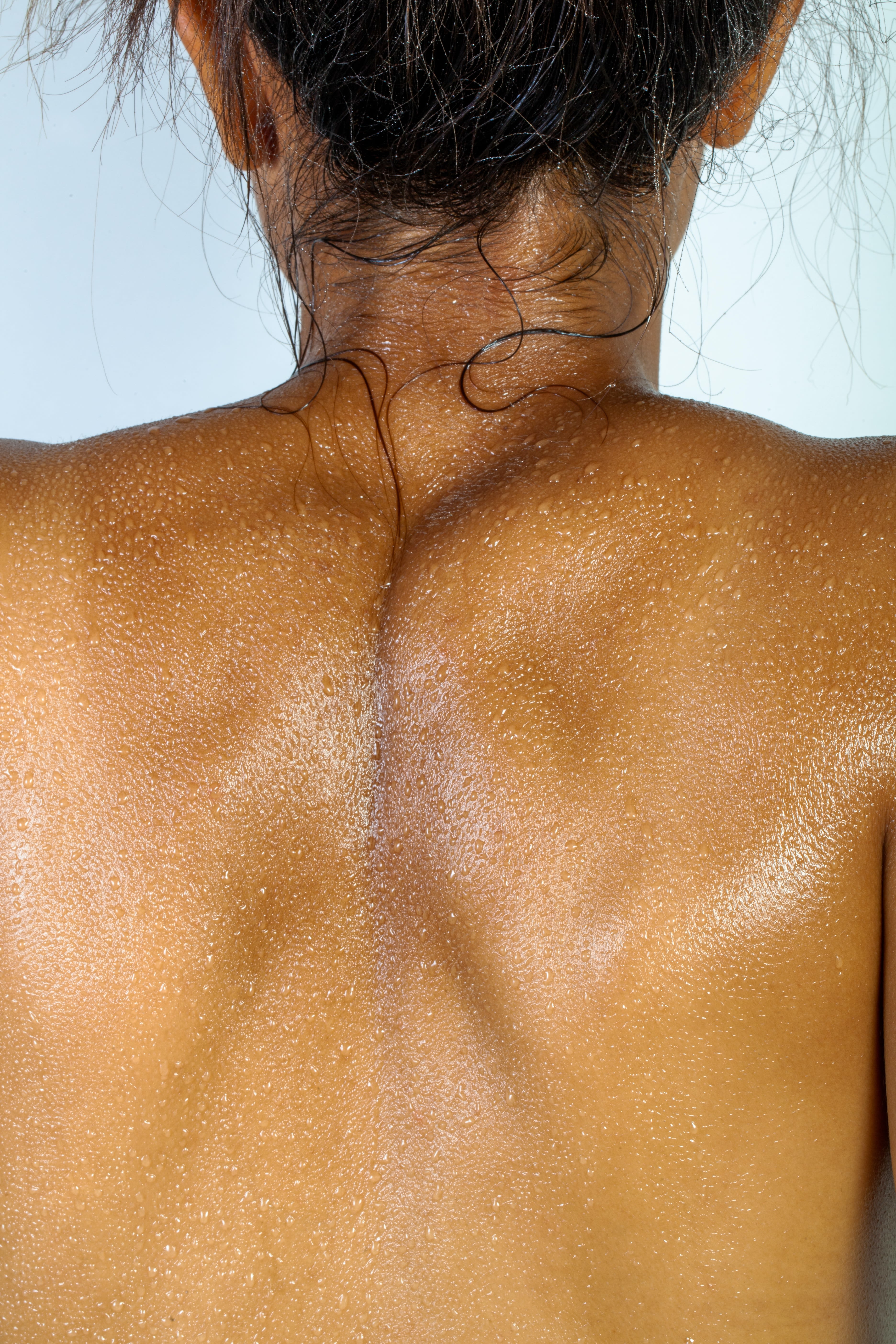
Photo by Wilhelm Gunkel on Unsplash
Photo by Wilhelm Gunkel on Unsplash
Very dry skin
If the dryness is not treated, very dry skin may develop. It can feel uncomfortably tight, very rough and itchy, and may also appear mildly scaly or flaky in patches – as if you have a thin, dry layer of glue over it (remember doing that at school?). Skin can develop a rough and blotchy appearance and sometimes it appears to be prematurely aged. It is also more sensitive to irritation, redness and the risk of infection.
The Eucerin solution: UreaRepair PLUS 10% Urea Lotion
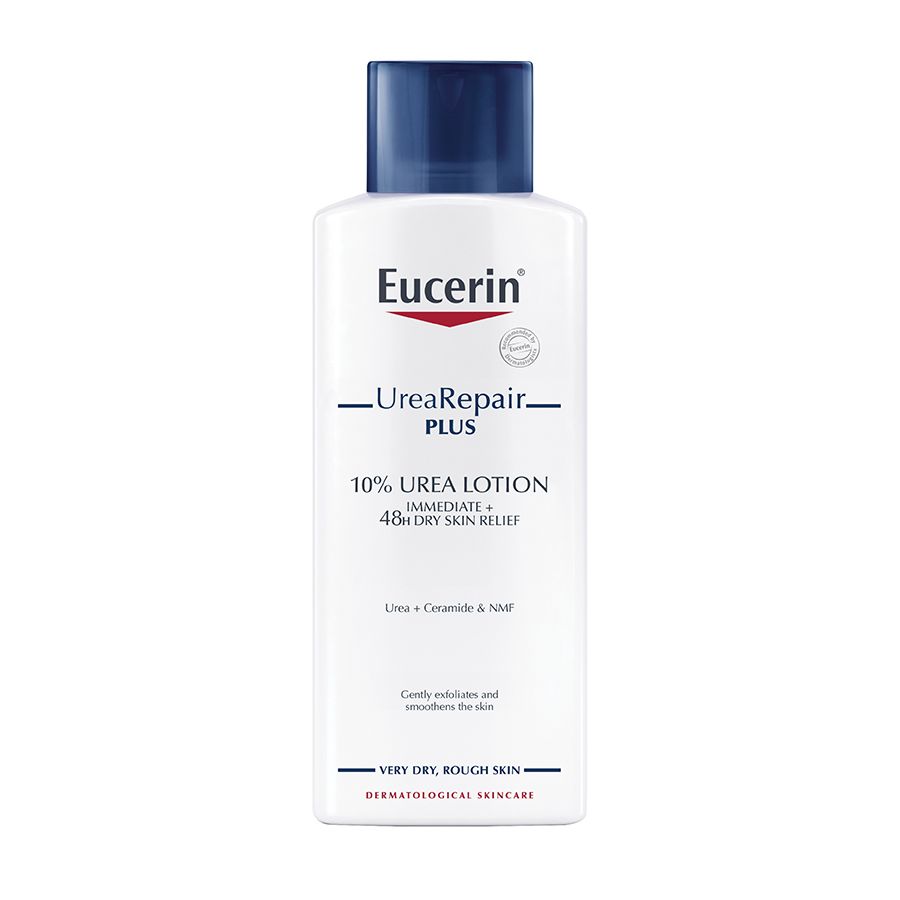
Extremely dry skin
Excessive dryness can cause the skin to shrink and become brittle, eventually leading to the skin cracking (think dry river bed) and becoming inflamed – especially in areas that need to flex during movement, such as the knees, knuckles, elbows and even the heels. Certain areas of the body – particularly the hands, feet, elbows and knees – are prone to extreme dryness and can develop roughness, chapping with a tendency to form cracks (known as rhagades), calluses, scaling, and frequent itchiness.
Caution: Do not use Eucerin UreaRepair PLUS 10% Urea on cracked skin or open scratches. Wait for cracks to heal first. You can use Eucerin AquaPhor to help heal cracks.
The Eucerin solution: UreaRepair PLUS 10% Urea Lotion
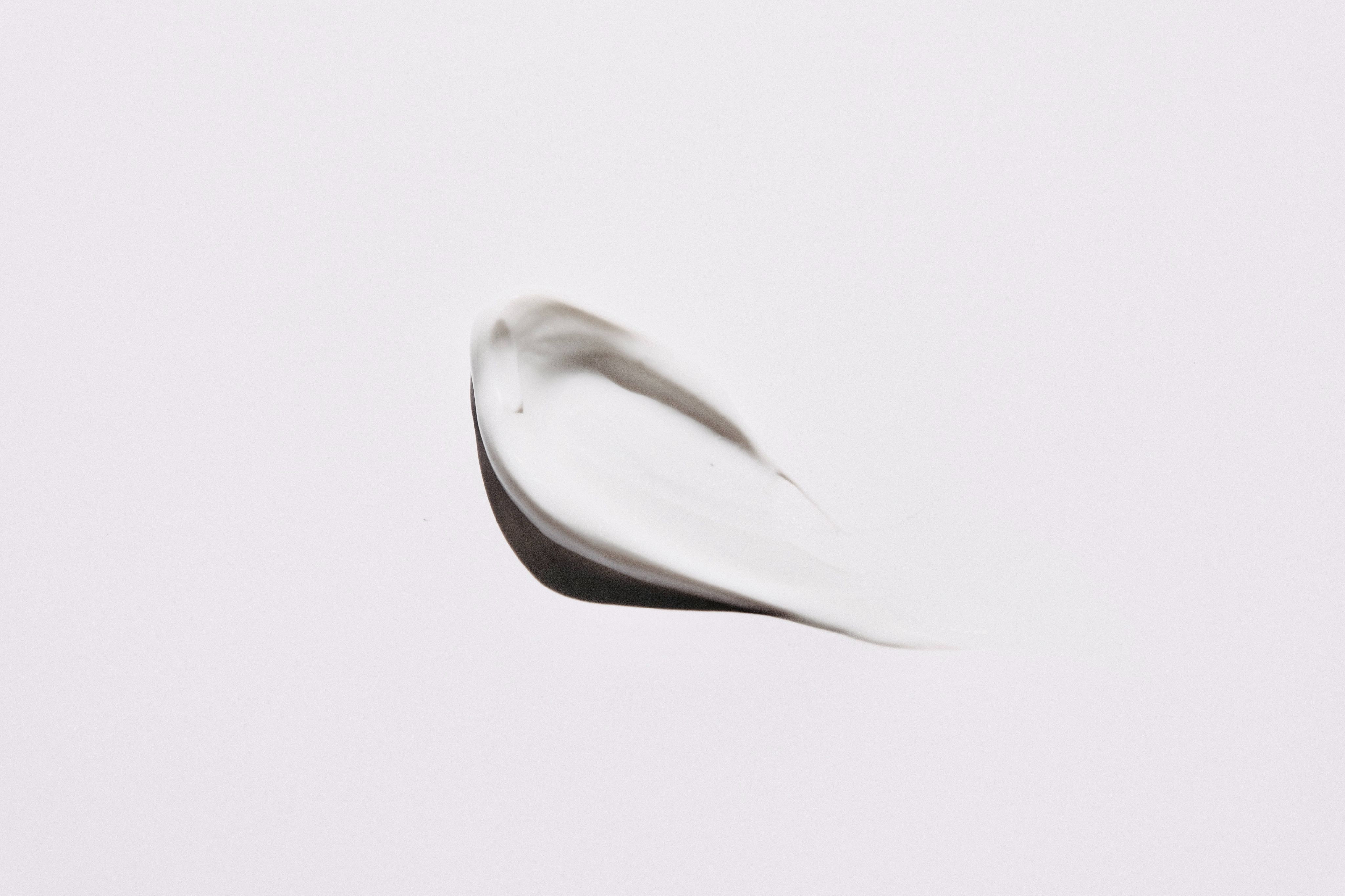

Psoriasis
Psoriasis is a common chronic inflammatory skin disease caused by an autoimmune response cycle with genetic roots. During flare-ups of psoriasis, the body replaces skin cells (keratinocytes) more rapidly than normal, and immature skin cells arrive at the surface of the skin within days instead of weeks, leading to build-up on the surface in rough, inflamed patches called plaques or psoriatic lesions.
Signs & symptoms
Skin with psoriasis will often form raised, inflamed areas like rashes or welts (these are red on paler skin and purplish on darker skin) covered by a build-up of tough, silvery or grey, scaly dry, dead skin cells (keratin) on the surface. These plaques can also lead to darkened patches of skin. Besides causing embarrassment and self-consciousness, the condition can become painful and interfere with sleep and concentration.
Causes
Along with commonly being caused by a genetic mutation, psoriasis can also be triggered by bacterial infections, injury, stress, alcohol and tobacco use, and some medications like antimalarials and lithium. These same triggers can also lead to flare-ups once a person has psoriasis.
The psoriasis cycle
- The immune system’s T-cells mistakenly (due to a glitch in the genetic makeup) attack healthy skin cells.
- This pushes the body’s skin cell manufacturing into overdrive.
- These immature skin cells are pushed to the skin surface too rapidly, forming raised, inflamed patches
- That unusual activity prompts the body to produce more T-cells.
Topical treatment
While there is no cure, treatments applied directly to the skin surface (topical treatments) are an essential part of managing psoriasis, along with medication. Topical treatments include skin softeners (emollients) and moisturisers, along with compounds that break down the outer layers of the skin (keratolytic agents), and corticosteroids. During the initial phase (in which the skin overproduces areas of excessive, rough growth), keratolytic agents are most beneficial, and can be used in conjunction with moisturisers and emollients.
Regular use of emollients and moisturisers are helpful during both the flare-up and remission phases of psoriasis. Here are four essential skin tools for managing psoriasis:
- Emollients work by generating a film that reduces the amount of water-loss from the skin due to evaporation, locking in essential moisture. They make the outermost layer of the skin more supple and reduce superficial scales.
- Moisturisers are emollients that are enriched with natural moisturising factors (NMFs), which attract and bind water. More advanced moisturisers also contain active components such as glyceryl glucoside, which activates the skin’s own moisture network to draw moisture from the deeper layers of the skin, to supply moisture to the upper skin layers.
- Keratolytic agents reduce the psoriatic plaque scales by breaking the keratotic material that has built up in deposits of dead skin cells. Salicylic acid is the most effective of the known keratolytic compounds. Urea is another commonly used keratolytic agent. As an NMF, urea also helps to bind water in the skin.
- Topical corticosteroids have anti-inflammatory properties, and reduce the rate of plaque formation and the irritation that comes with it. Moderate strength topical corticosteroids are often prescribed for psoriasis on the face, genitals, or areas that require stretching or flexing, in combination with emollients and moisturisers.
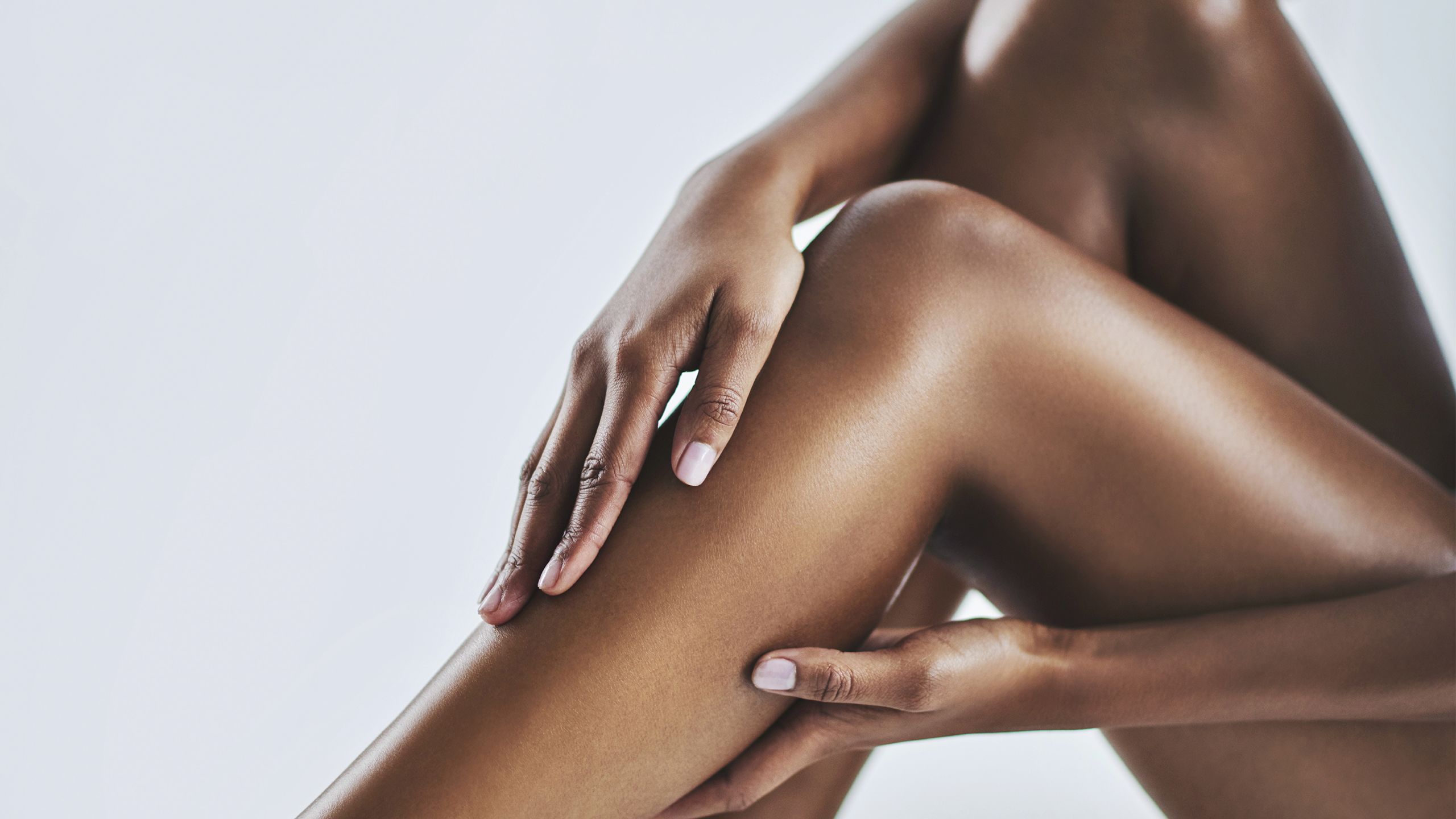
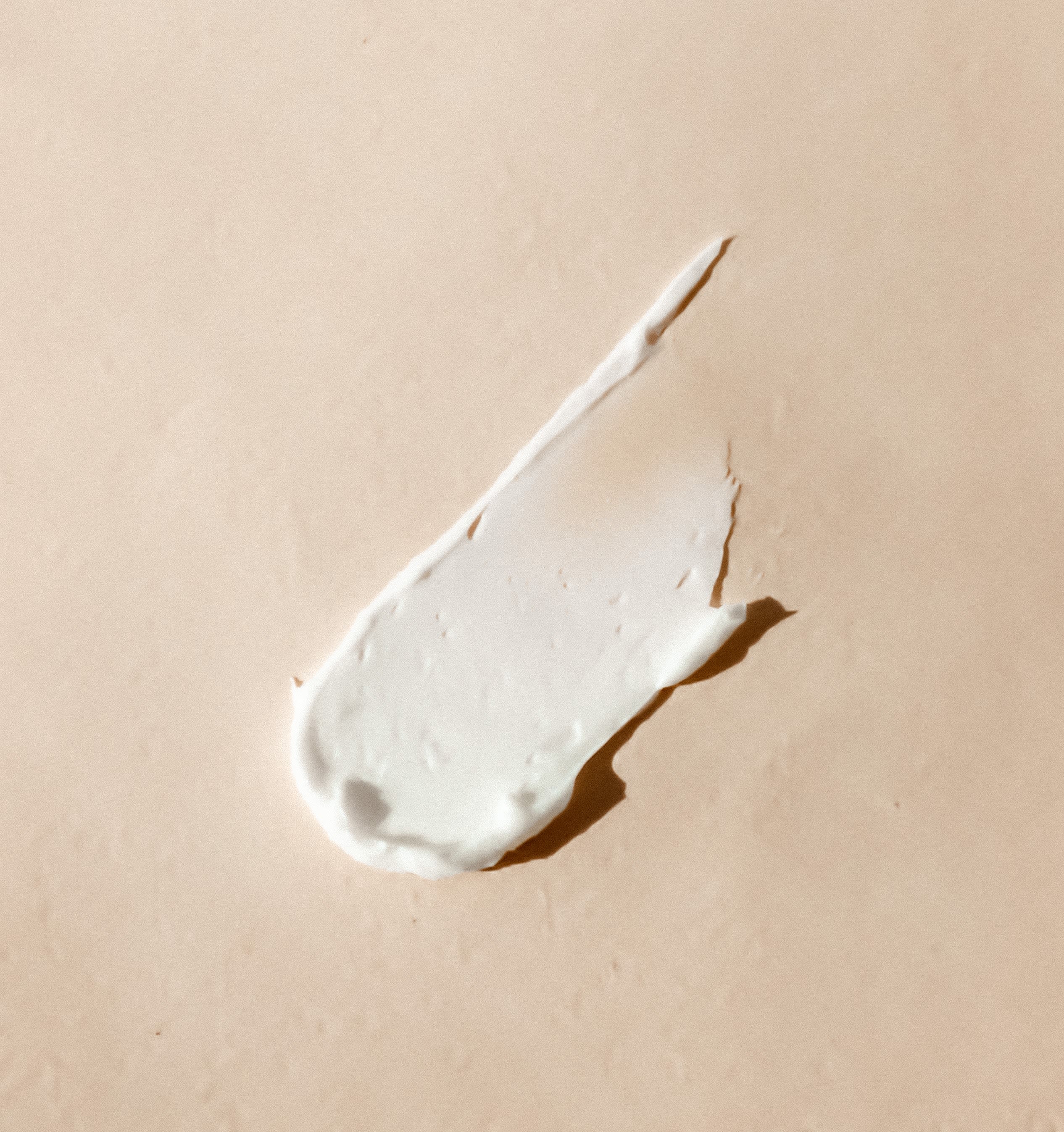
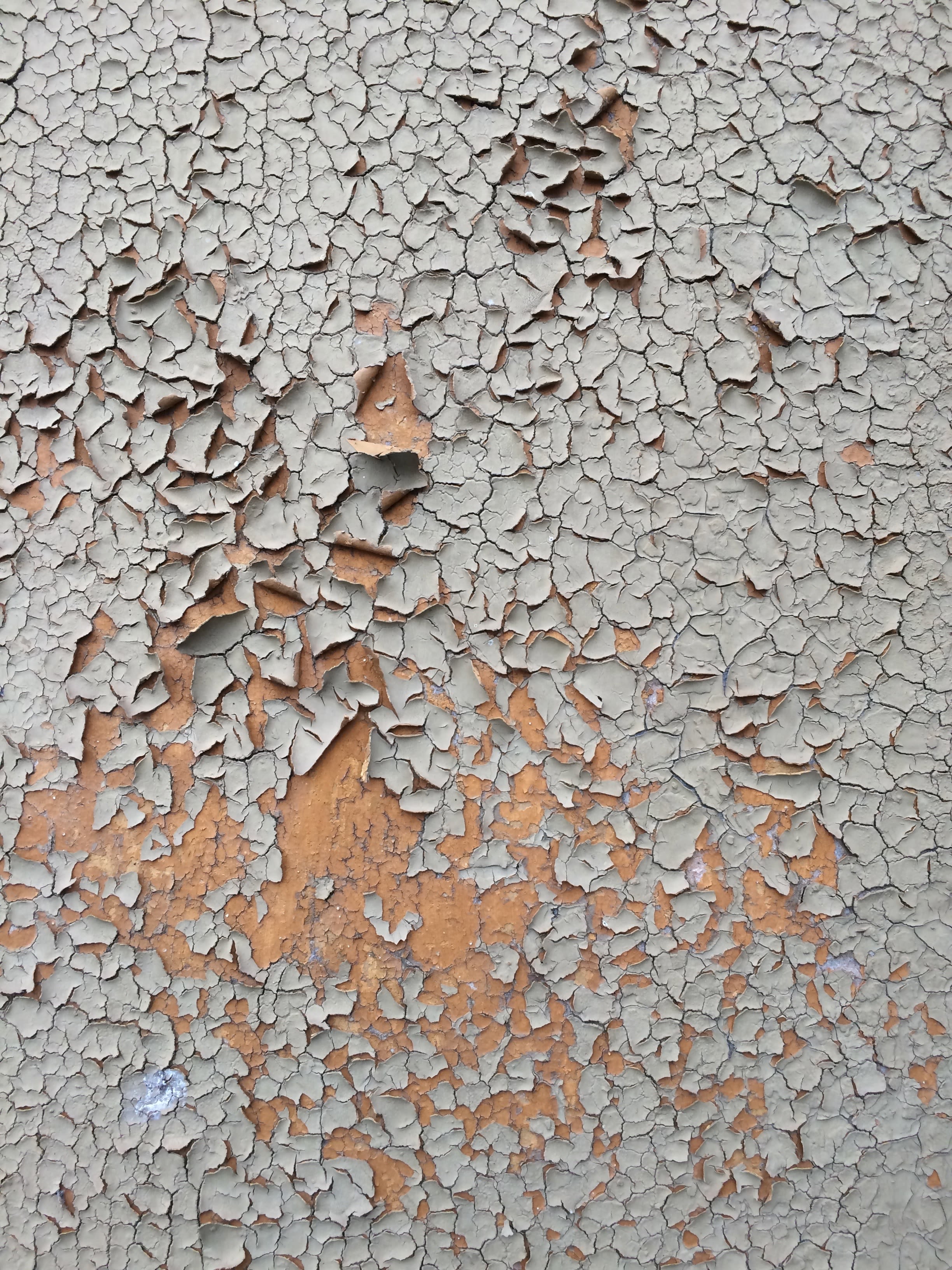
The Eucerin Solution: Psoriasis
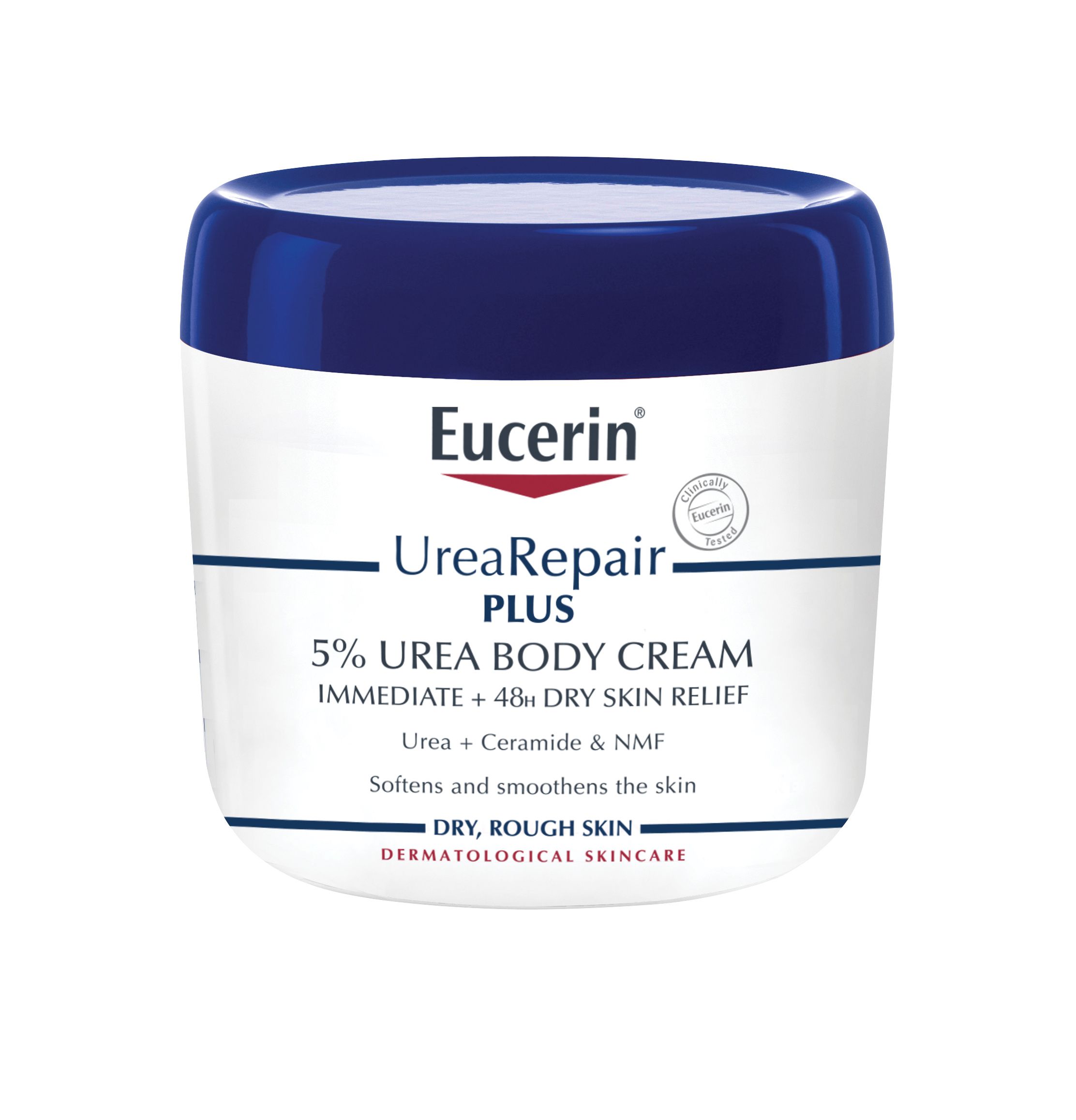
Flare-ups
In addition to supporting your skin with gentle, everyday cleaning products like UreaRepair PLUS 5% Urea Replenishing Body Wash, Eucerin also offers UreaRepair PLUS 10% Urea Lotion, a quick-absorbing, colourant and fragrance-free emulsion that contains powerhouse ingredients to combat dry skin, including glyceryl glucoside, urea and ceramides. With daily use, UreaRepair PLUS 10% Urea Lotion reduces dry skin symptoms associated with psoriasis.
Remission phase
Psoriasis sufferers will also find Eucerin UreaRepair PLUS 5% Urea Body Cream effective in keeping the skin soft, supple and resilient.

Eczema
Eczema (also called atopic dermatitis – ‘atopic’ means unusual in Greek, while ‘derma’ refers to skin, and ‘-itis' indicates inflammation) is a chronic skin condition linked to both the skin’s barrier cells and its immune cells. Eczema causes flare-ups of excessively dry, severely itchy and inflamed skin, with scabbing and oozing. The intensity of itching is one of the key differences between eczema and psoriasis, and eczema will show up more in the insides of the elbows and backs of the knees and at the hip.
Signs & symptoms
Eczema flare-ups can lead to cracked, dry skin, itchiness and rashes on swollen skin, along with darkening of the skin around the eyes. The rash presents as reddened patches on pale skin and as darker brown, purple or ashy grey patches on darker skin. On darker skin the condition can also present as bumps on the arms, legs and torso (papular eczema), as well as raised skin like goosebumps around the hair follicles (follicular accentuation). When these flare-ups become irritated by scratching, it can lead to skin thickening and firm, raised skin bumps called prurigo nodules. Patients with darker skin may show darker coloured skin patches (hyperpigmentation) or lighter coloured patches (hypopigmentation), which will fade once the condition is under control. In severely irritated skin during intense flare ups, eczema can lead to a further trio of symptoms – skin thickening, hyperpigmentation or hypopigmentation, and exaggerated skin lines – called lichenification (like patches of lichen on a rock).
Causes
Eczema affects the protective top layer of skin, leaving it prone to infection and irritation. Certain genes are linked to the development of the condition, and people with a family history of eczema, as well as those whose families show allergic responses including asthma and hay fever, are at risk for developing eczema.
Eczema flare-ups can be triggered by chemical skin irritants like harsh soaps and detergents. Environmental triggers can include everything from cold or dry weather, to damp, dust mites, mould exposure, pollen, pet fur and dander, and food allergies and sensitivities. Hormones and stress can also trigger flare-ups.

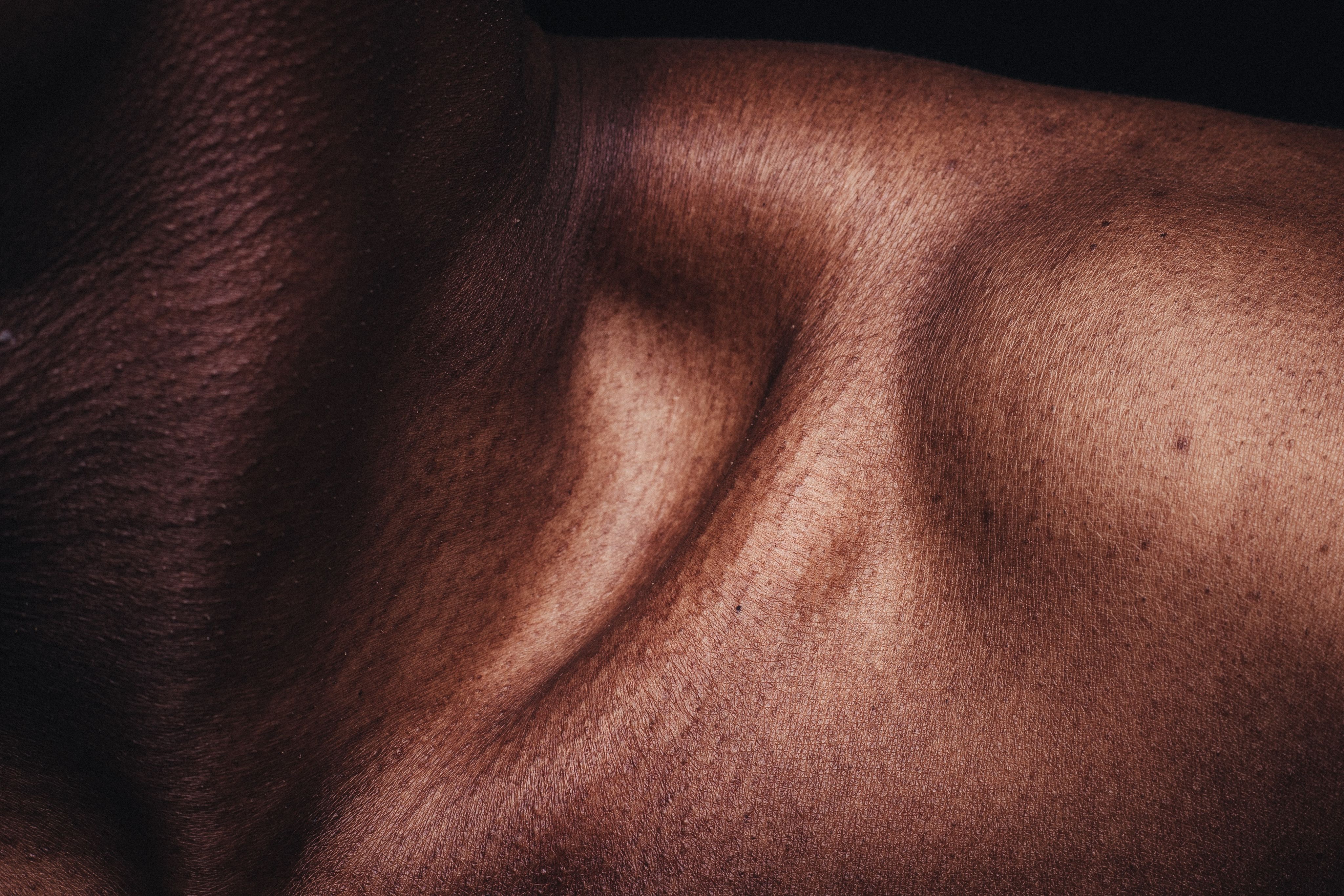

The Eucerin Solution: Eczema
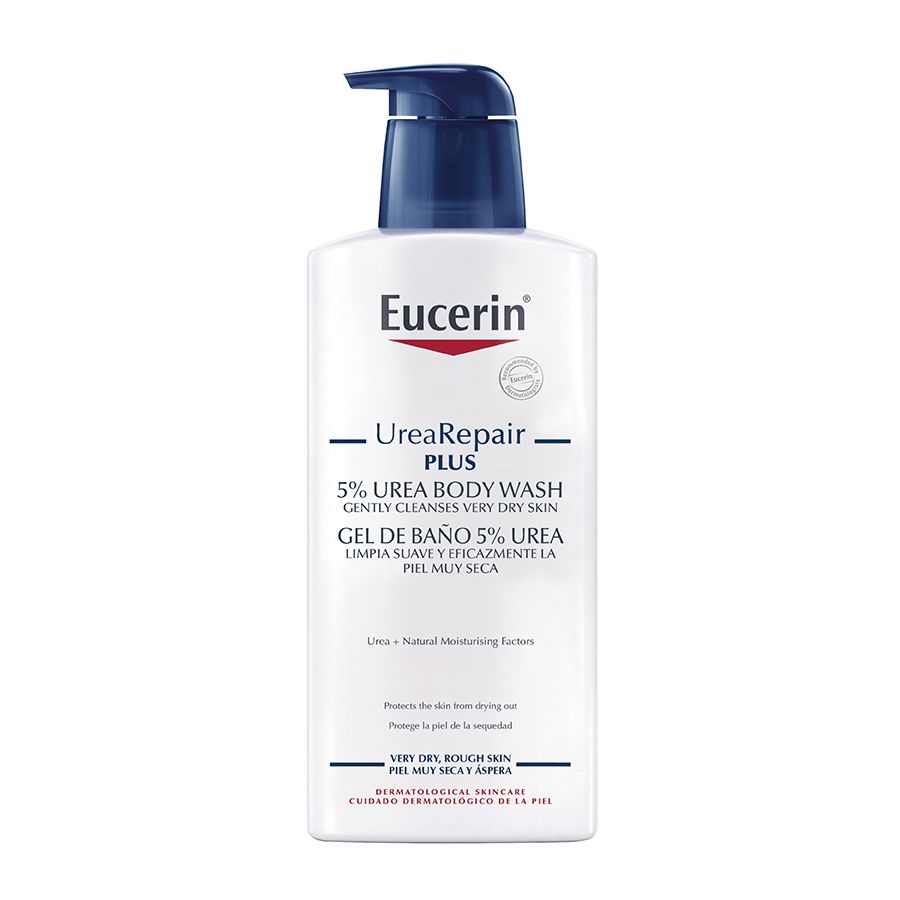
Daily use
The UreaRepair PLUS 5% Urea Lotion is formulated to hydrate skin, soothe itching, and protect the skin from opportunistic infection while it’s irritated. Rich and creamy, fragrance-free, colourant-free and preservative-free UreaRepair PLUS 5% Urea Lotion can be applied at any time and contains powerhouse ingredients to combat dry skin, including glyceryl glucoside, urea and ceramides. Daily use of the range can also help to prolong time between flare-ups by protecting and nurturing the skin and restoring its strength. Do not use UreaRepair PLUS products on cracked skin. Always consult a doctor for a diagnosis and treatment options.
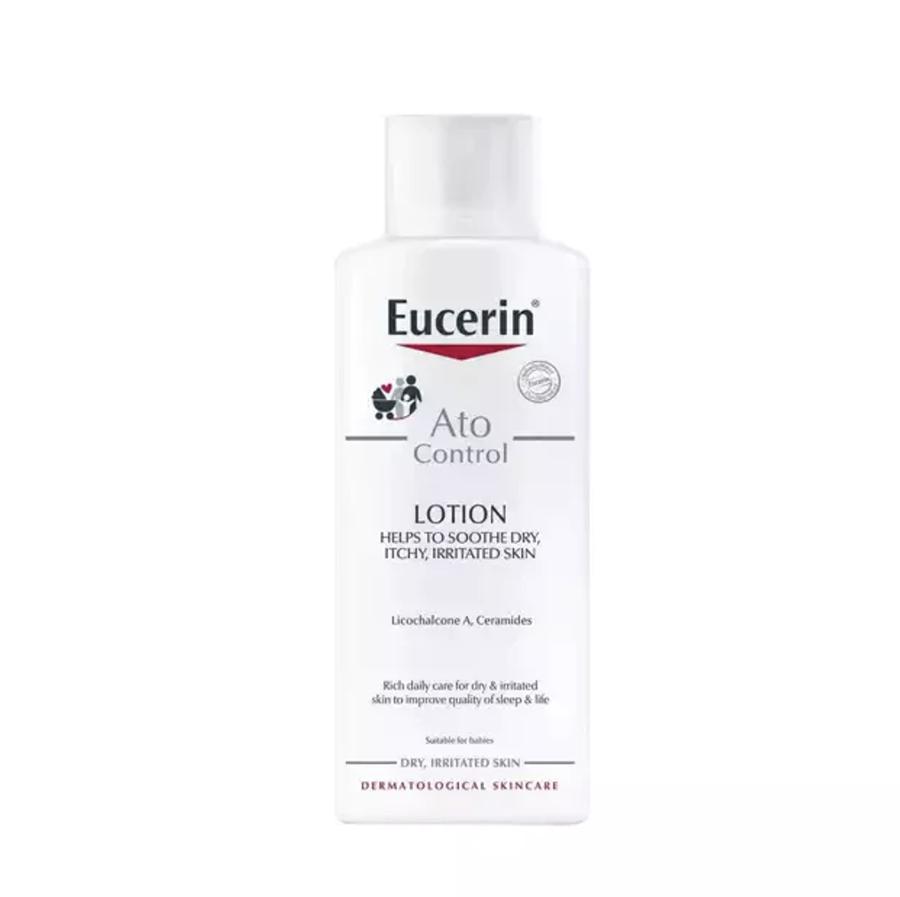
Severe flare-ups
More targeted support is needed if skin develops open wounds during eczema flare-ups. During this phase the Eucerin AtoControl range is recommended for soothing itchy, atopic skin.

Our skin changes naturally over time. Age-induced skin dryness leads to skin increasingly feeling dry, tight and sensitive, while fine lines and wrinkles also appear. As we age, we need to re-evaluate our skincare routines and products to keep our skin healthy, feeling comfortable, and minimise the visible signs of ageing.
Skin ageing 101
Human skin naturally and inevitably becomes drier and less elastic over time. But generally after the age of 25, the skin metabolism slows down. By the third decade of life, the skin has begun to change, as it increasingly loses moisture and becomes less elastic, and the first fine lines and wrinkles usually appear around the eyes – evidence of age-induced dryness.
Genetics and ethnicity can make a difference to the speed at which a person’s skin ages and the age at which the effects of age-induced dryness become apparent. The signs of ageing appear less severe and start at a later stage in darker skin.
Hormonal changes will also have an impact. With the onset of menopause in women, a drop in oestrogen levels may slow the production of elastic fibres within the skin.
How your skin changes, layer by layer
The horny layer: The horny layer (also known as the stratum corneum, the top 10-30 layers of your skin) is made up of tightly packed skin cells (keratinocytes) and substances that together are known as the NMFs (natural moisturising factors). These NMFs give the horny layer the ability to bind water. In young skin, an efficient horny layer stores between 10 and 20% of the entire body’s water. As the skin ages, the horny layer is affected by slowing processes within the skin and external factors compromising its barrier function. It can no longer hold moisture in the skin as effectively, resulting in dryness followed by the appearance of wrinkles. With this vital function of skin compromised, the skin is now less able to protect itself against the external factors that accelerate age-induced dryness further.
Dermal layers: In these layers below the stratum corneum, the structure of the skin is compromised and deeper wrinkles are more likely to show. Elasticity and skin density is reduced, and skin loses its youthful look.
Subdermal layers: In these deeper layers, the lipid-storing cells get smaller and are reduced in number.
Age-induced dryness
Untreated, the skin’s natural increasing dryness and sensitivity can worsen and develop into age-induced dryness.
Seven symptoms of age-induced dryness are:
- Dry, tight skin
- Skin sensitivity leading to inflammation
- Roughness
- Chapping with a tendency to form cracks (rhagades)
- Callus formation/scaling
- Frequently itching
- Noticeable cracks and wrinkles forming on the surface of the skin, becoming deeper over time, and increasing in number
How to treat age-induced dryness
You can support your skin’s health and functionality by supplementing its lost NMFs and helping to repair its barrier function with a gentle range of skincare products, from body washes and cleansers, to lotions and protective creams.
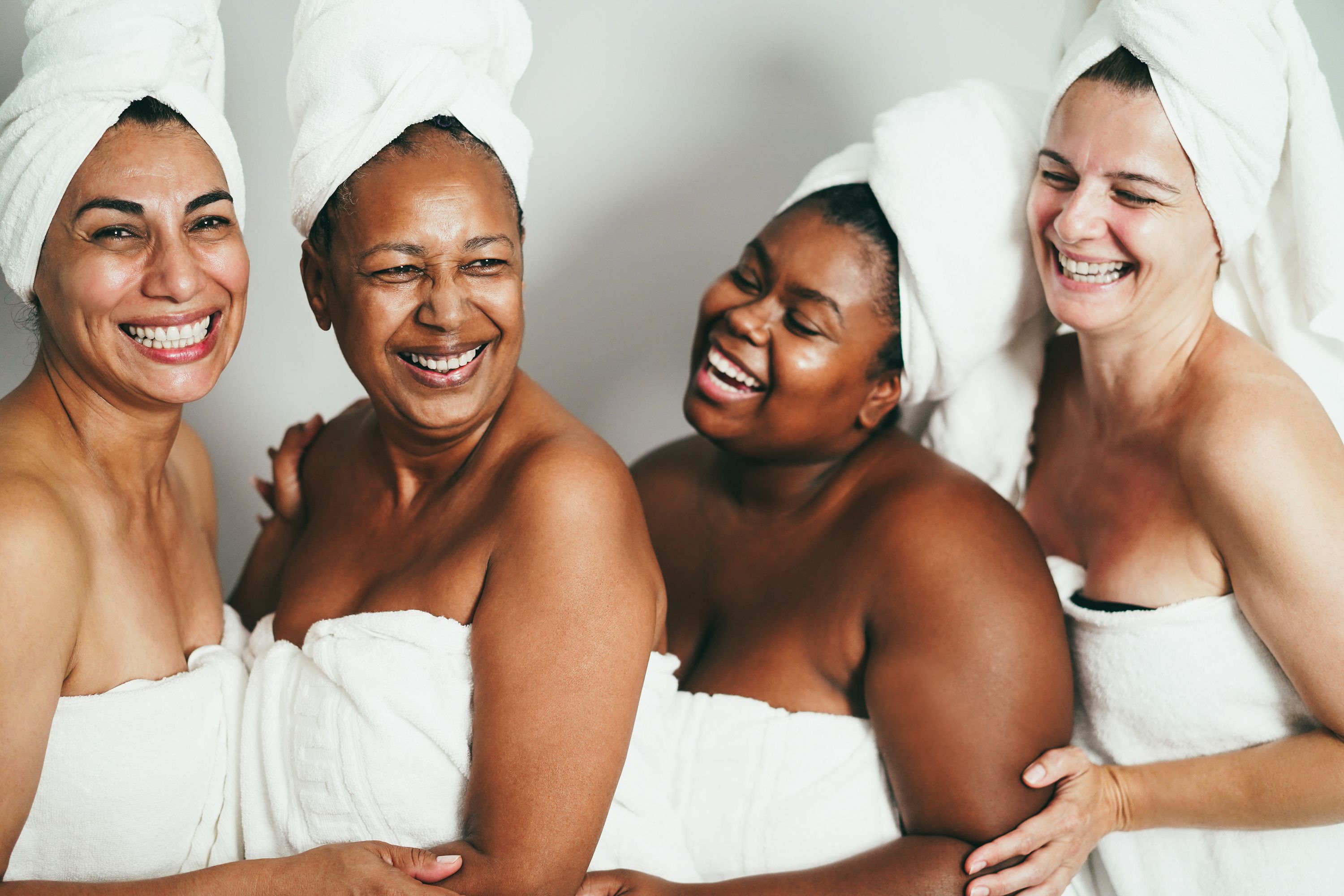
The Eucerin Solution: Age-induced skin dryness

UreaRepair PLUS 5% Urea Body Cream, a quick-absorbing, colourant and fragrance-free emulsion, contains powerhouse ingredients to combat dry skin, including urea and ceramides. With daily use, UreaRepair PLUS 5% Urea Body Cream reduces dry skin symptoms associated with age-induced dryness, keeping the skin soft, supple and resilient. The urea in UreaRepair PLUS 5% Urea Body Cream binds moisture to the skin, while lactate draws and locks moisture to the upper layer of the skin.
Avoid using soap, and opt for gentle body cleansers such as Eucerin UreaRepair PLUS 5% Urea Replenishing Body Wash Fluid which won’t wash away the skin’s natural protective barrier. It is enriched with moisturising urea and other NMGs to prevent skin from drying out

Dry to very dry skin, including dry skin due to diabetes or psoriasis, benefits from regular and consistent skincare, using products specially formulated to both tackle the causes of the dryness and give instant and long-lasting relief for the symptoms.
Treating dry skin takes a specialised, gentle skincare routine that does three things:
- Cleans the skin without harming the skin barrier.
- Restores moisture, targeting areas of concern.
- Protects the skin from further harm.
Skincare for dry skin needs the following six steps:
- Gently cleanse your scalp, face and body with suitable products and lukewarm water. Find important cleansing tips here.
- Lightly rub a product containing Urea into slightly damp skin.
- Lock in moisture by applying moisturiser all over the body and gently rubbing it in. Read more about caring for dry body skin here.
- Use products suitable to specific areas like your feet and hands. Learn how to care for your dry hands and feet here.
- At the start of your day, apply sunscreen with an SPF of at least 15, and remember to reapply throughout the day.
- Moisturise your lips. Find useful lip care tips here.
Make your six-step routine even more effective by keeping the following skin care tips in mind:
- When cleansing, rinse off your body wash thoroughly but do not rub at the skin.
- Pat dry with a clean towel until just damp.
- Be patient with your routine. This might be a good time for podcasts or audiobooks.
- Exfoliate once per week only, or as your dermatologist recommends.
NB! Babies and young children with eczema (atopic dermatitis) need specific daily skincare products. When choosing any skincare product, always check the age recommendation.

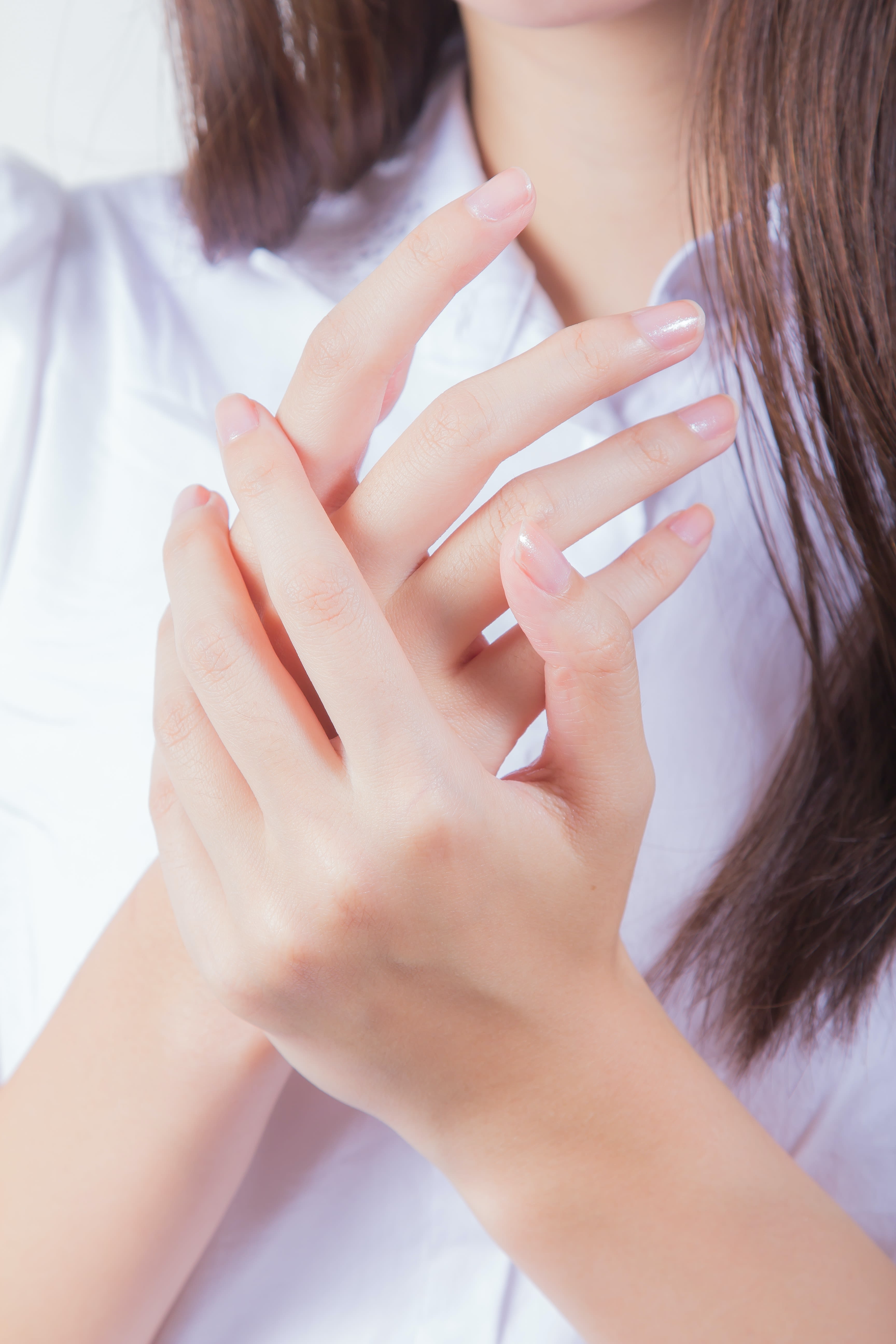

We cleanse to remove dirt, sweat, and bacteria, preventing unpleasant body odour and keeping skin clean and healthy. Showers and baths also help us to feel refreshed, reinvigorated and relaxed. But thanks to our active lifestyles and strong awareness of hygiene, many of us bathe to excess, which is harmful to our skin. If you have sensitive skin, you need to be mindful of how you’re cleansing.
How to cleanse dry skin
Here are 10 cleansing tips specially for dry skin:
- Install a water filter in your shower or bath taps if you’re in an area with hard water (high content of minerals like calcium and magnesium). You can spot this by checking for chalky limescale build-up in your kettle and showerhead, or seeing whether water left to dry on glasses leaves spot marks. Hard water strips oils from skin and leaves soap residue, which can clog pores.
- Pick your bath and shower products carefully (see more about how to pick an appropriate cleanser below). They should be preservative-free and fragrance-free, like Eucerin UreaRepair PLUS 5% Urea Replenishing Body Wash. Quick tip: Light a candle or wax melt instead if you enjoy sweet-smelling bath time pampering.
- Keep showers and baths lukewarm – around 37 degrees (the same temperature as your body). Hot water strips the oils from your skin.
- Give yourself a quick rinse to get wet all over, softening any dirt and making it easier to glide body wash across the skin.
- Apply your body wash one area at a time, with a soft, clean washcloth (cleaned and changed daily) or just with your hands (the natural ridges on your hands are surprisingly effective, and this is recommended for people with eczema). Avoid scrubs and loofahs that hang out in the bathroom, breeding bacteria.
- Target the must-wash areas where bacteria hang out one by one, top to bottom: your armpits, underbust, belly button, any areas with skin folds, groin, upper thighs, backside, and feet. Gently massage in the body wash, then rinse off thoroughly. Do not leave soap to “soak in”.
- Keep showers and baths short – under 10 minutes. Water might have a neutral PH of 7, but our skin is actually acidic, with an ideal PH around 4,7. So even water alone strips away the skin oils your body needs.
- Rather than rubbing and scrubbing with your towel, pat the skin dry instead so that it’ll retain some moisture.
- Apply any specialised skin treatments.
- Moisturise well – within 3 minutes after your final rinse – to lock in moisture. Oil-based products are most effective when applied to damp skin. Read more on best dry skin care treatments .
Is your cleanser right for your skin? Check these five questions:
- Is it suited to my specific skin type and concern?
- Will it be gentle on my skin and not dry it out?
- Does it have a PH value that corresponds to that of healthy skin? Ordinary soap has a PH of around 10 while healthy skin’s PH is around 4,7.
- Does it contain lipid replenishing components?
- Has it been clinically tested?
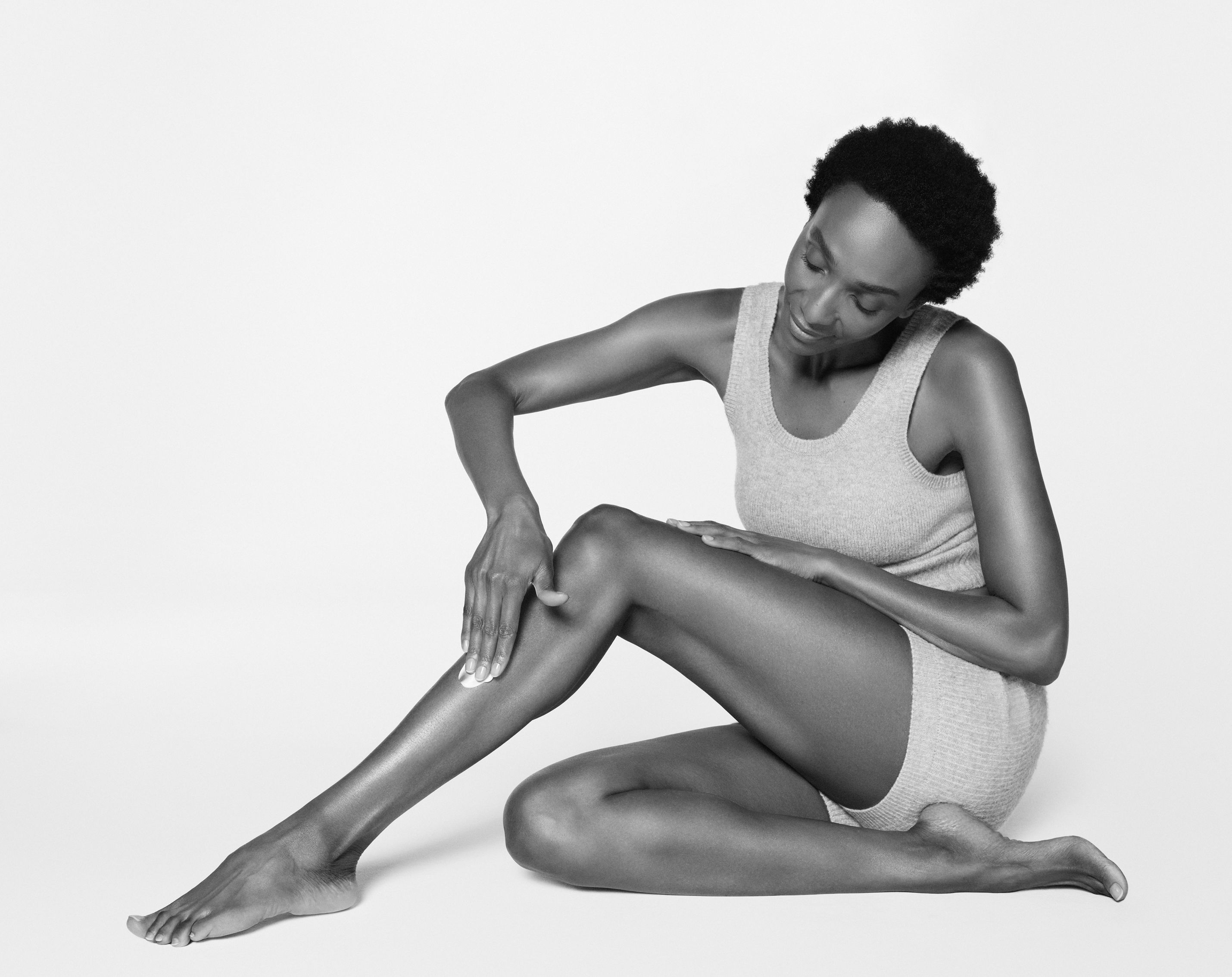
The Eucerin Solution: Cleansing
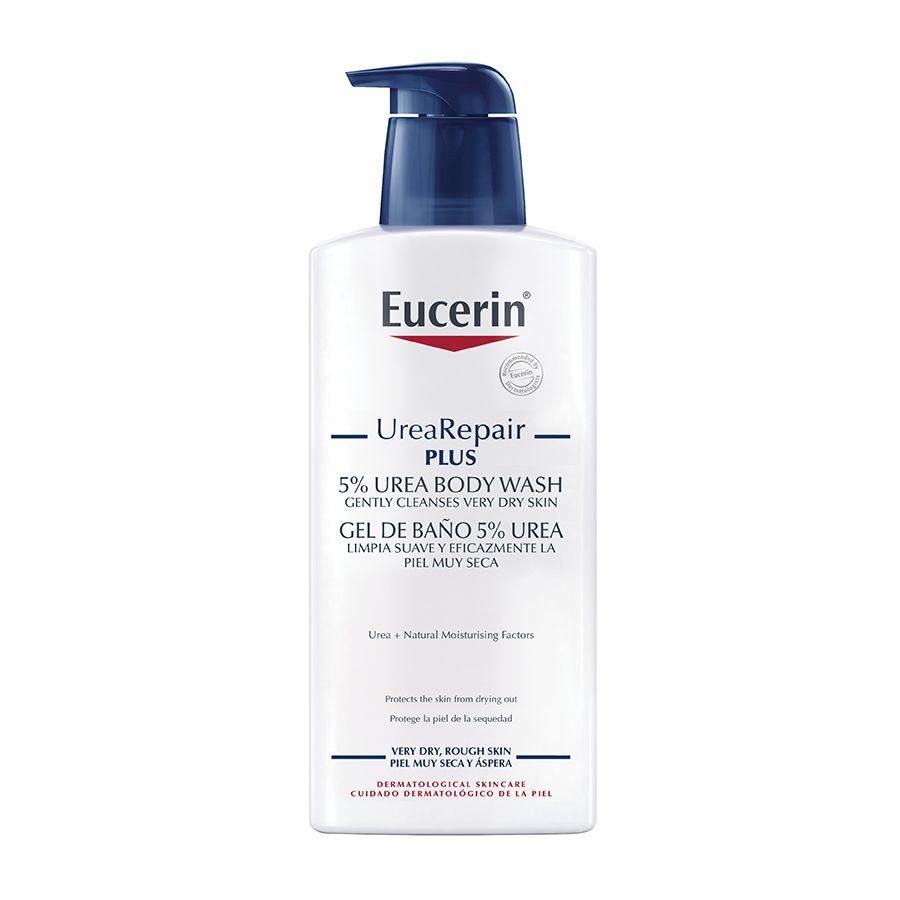
If you’re batting dry skin issues, whatever the cause including eczema and psoriasis, UreaRepair PLUS 5% Urea Replenishing Body Wash can answer yes to all five questions. This gentle, effective all-over body cleanser is soap and fragrance free and contains urea to gently exfoliate, as well as lipid replenishing NMFs like sodium lactate to bind moisture to the skin surface. Eucerin’s range of cleansers and care products is clinically and dermatologically proven to offer immediate relief from dryness and itching, as well as a 48-hour delay of dry skin symptoms.

After cleansing, moisturising is the next essential step in restoring balance to your dry skin. Moisturising your skin regularly after bathing or showering increases its water content, protects it and encourages the orderly removal of dead skin cells, leaving it feeling smooth, soft and comfortable. But the structure of our skin differs slightly according to where it is on our body. And different parts of our bodies are exposed to different environments and processes. As a result, some areas of the body, such as our hands, feet and lips benefit from particular care and dedicated products, aside from the products we use on the rest of the body.
Moisturising rough, dry body skin
Moisturisers’ main job is to restore the moisture balance in the upper layers of the skin, calming itches and restoring a soft supple glow to rough, dry skin. Look for care products that contain active, powerhouse ingredients like the urea, lactate, ceramide-3 and gluco-glycerol listed in Eucerin UreaRepair PLUS 10% Urea Lotion.

- Urea and lactate attract and bind moisture into the upper layer of the skin. Generally, products should have a concentration of at least 5% urea and NMFs. However, very dry skin that has become rough and cracked requires a higher concentration of around 10% urea.
Caution: Don’t use 10% Urea Lotion on cracked skin. Apply Eucerin AquaPhor to heal cracked skin first
and then once healed apply Eucerin 10% Urea Lotion.
- Ceramide-3 helps to repair the lipid barrier, which slows the rate of evaporation from the skin by regulating moisture loss. The restored skin barrier is better able to keep out irritants.
- Gluco-glycerol. The moisture balance in the upper skin layers is dependent on the supply of moisture from the lower layers. Gluco-glycerol stimulates the skin’s proteins that serve as channels in the transfer of water (aquaporins), and helps to support the natural upward flow of moisture to the upper skin layers, restoring the moisture.

Professor Ncoza Dlova, Dermatologist and Head of School of the University of KwaZulu-Natal's (UKZN) School of Clinical Medicine, explains why urea is so important in modern dermatological treatments for dry, itching skin: “Urea is significantly reduced in dry skin, so the supplementation of urea actively improves the moisture-binding capacity and replenishes the skin’s moisture deficit. Urea is established in dermatology as one of the gold standards in the treatment of dry and very dry skin because of its high potency humectant effect. This means that it keeps your skin moist by drawing water from the deeper layers of your skin and the air.”

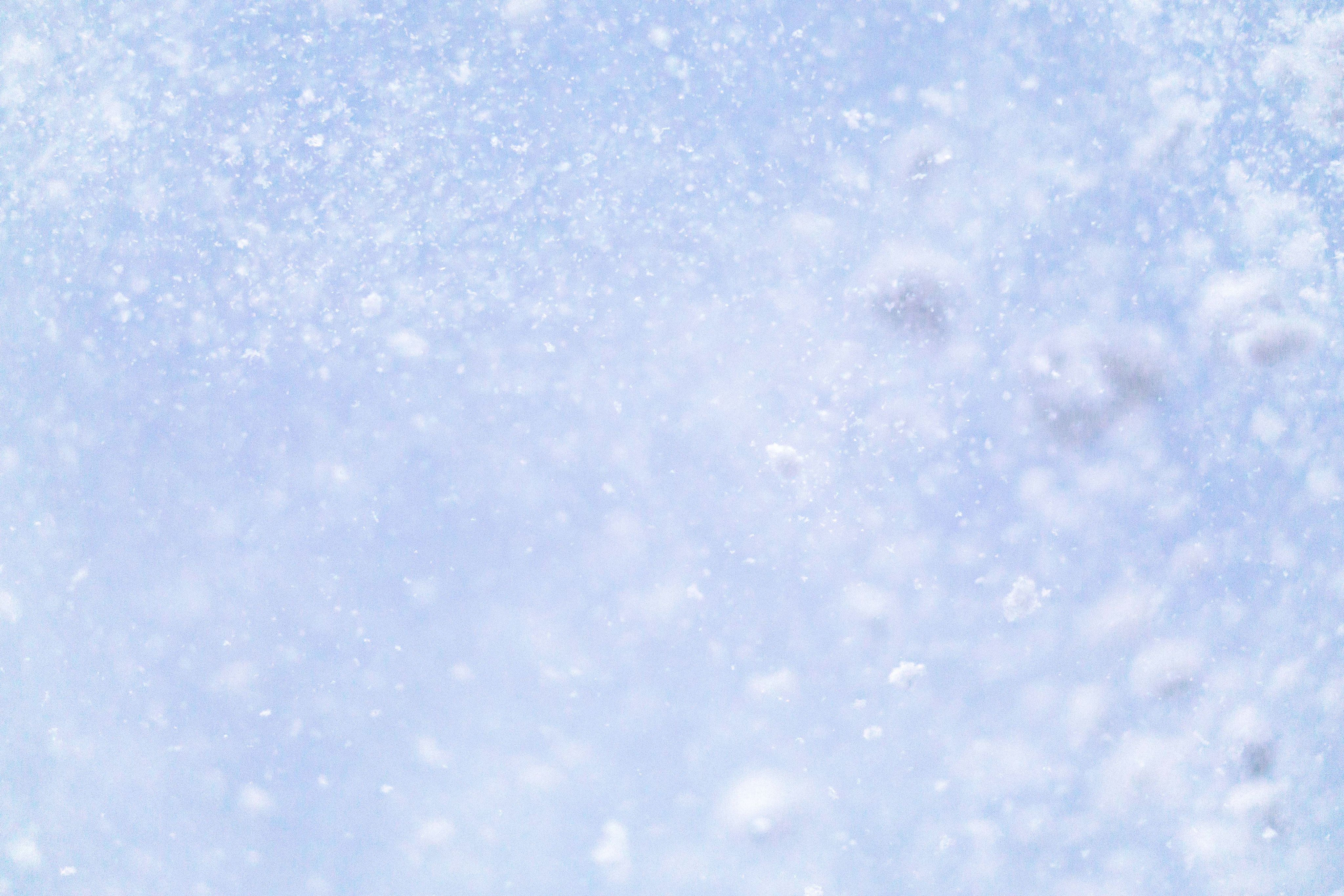

All about feet
Daily life keeps us on our toes, but our poor feet often come last in our body care routine. If the skin on your feet is so dry that you could start fires when you rub them together under the covers, it’s time for a little TLC. The good news is that you can treat it all, from rough, dry skin, to callouses and thickened heels. You’ll soon be ready to put your best foot forward in your prettiest stilettos and sandals.
Understand your foot skin
The skin on the soles of our feet has developed to be naturally thicker and harder than skin elsewhere on the body, as cells have to divide more quickly in response to intense pressure and friction. It is also susceptible to dryness as it has fewer oil glands. And the daily stressors – like restrictive footwear – that we place on it can dry it out even further, especially at the heel pads.
Hands Up
Your hands do it all. Your skin has to withstand everything from an enormous range of temperatures, to the harsh chemicals in hand sanitisers, dish detergents, paint and building materials, and repeated washing. They also need to withstand friction from things tugging at them including your over-eager dog on a leash.
Understanding your hand skin
On the back of our hands the skin is thin, fine and flexible, but quick to show dryness and ageing. Over our knuckles it needs to stay elastic, as we use our hands for everything, yet tough, as this is often a body part we scrape and knock against things. The thicker, more stable skin on our palms, inner fingers and fingertips needs to be tough enough to pull a rope and push a sewing needle, but sensitive enough at the tips to pick up details half the width of a piece of hair. Dryness is problematic for all of these functions.
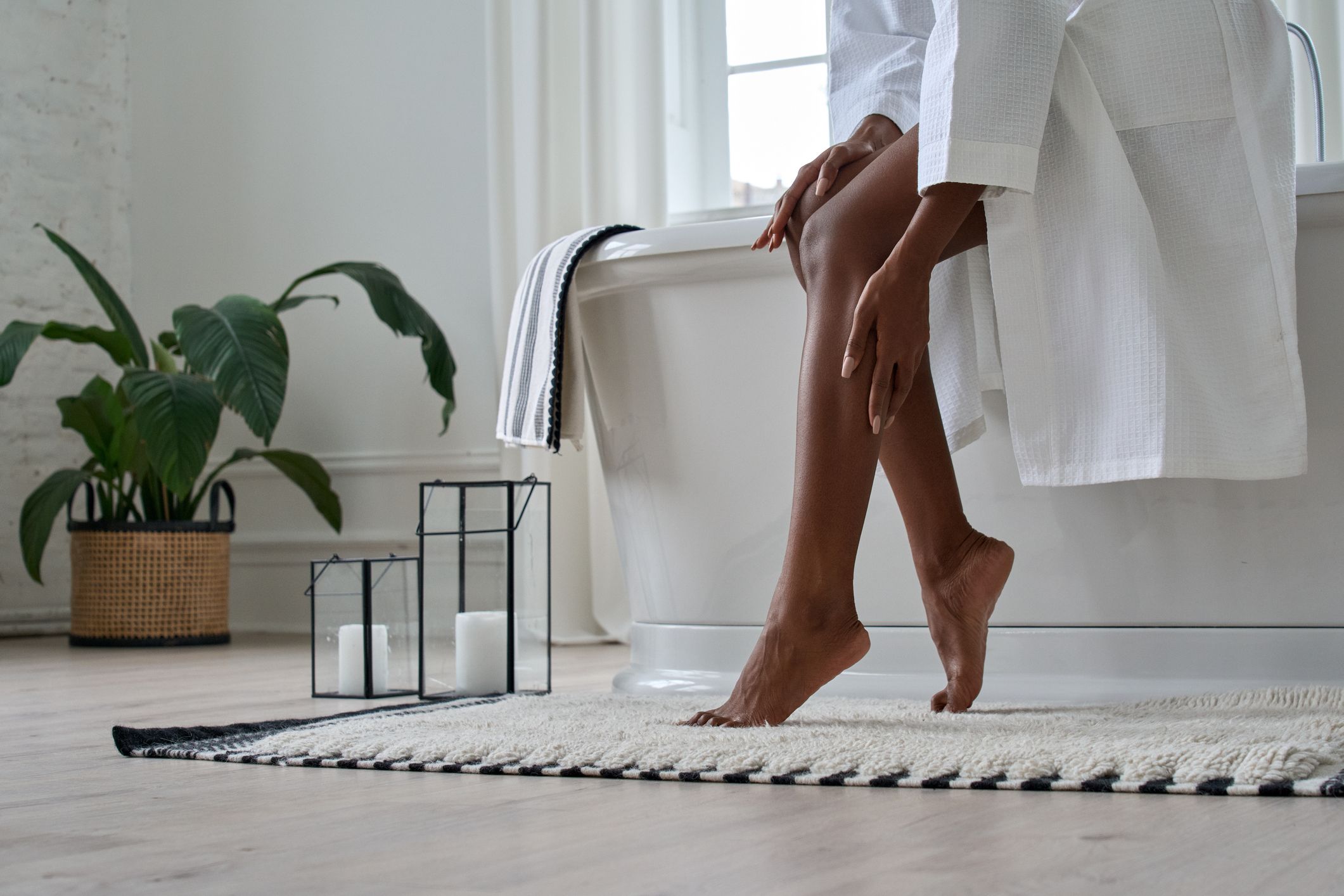

The Eucerin Solution: Hands and feet
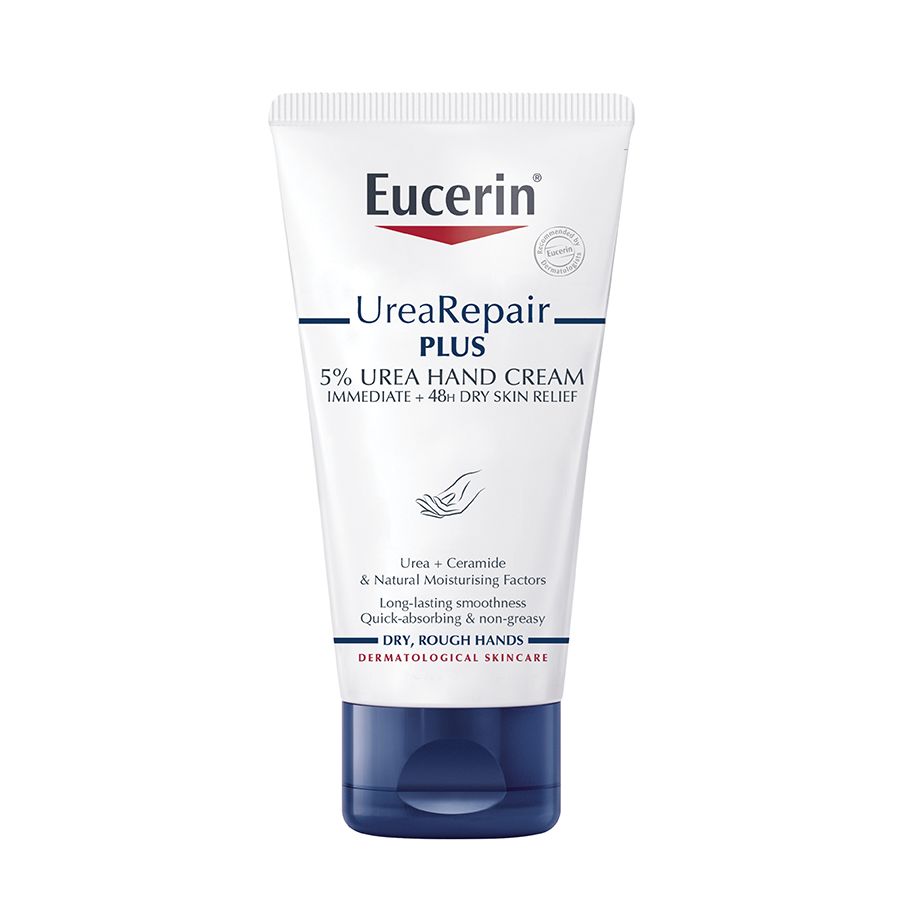
Hands
Our hands’ stable barrier function is essential to protect our body from external factors while keeping them hydrated. UreaRepair PLUS 5% Urea Hand Cream is gentle enough that we can apply it as often as needed, including every time we wash or sanitise our hands. And if your hands are in rough condition, UreaRepair PLUS 5% Urea Hand Cream will give you instant relief and protect your hands against further dryness for up to 48 hours. Gold standard active ingredients like urea, ceramides and other NMFs bind moisture in and repair the skin’s natural protective barrier to prevent further moisture loss.

Most of us suffer from dry and cracked lips at some point, especially during winter. You also can’t forget about those fine, raw cracks at the corners of your mouth – every sip and nibble will remind you. And who wants kisses when your lips feel like a tiny bowl of cornflakes?
Common dry lip issues
Dry, cracked lips: Dry lips feel dry, tight and uncomfortable. As they dry out further, they can become cracked and painful.
Cheilitis: This is the term used for inflammation of one or both lips, along with the inflammation of the facial skin area surrounding the lips (perioral dermatitis). Aside from eczema, cheilitis can also be caused by weather conditions, allergic reactions, or as a side effect of certain medications.
Lip-licking eczema: Are you licking your dry lips only for them to feel even dryer moments later? For some people this licking becomes habitual and can cause a kind of inflammation called lip-licking eczema or irritant contact cheilitis.
Four dry lip causes
There are four main different causes and triggers for dry lip skin: skin type and condition, lip skin structure, the environment, and certain medications.
1. Skin type and condition: As some people are more prone to dry skin than others, they’re also more prone to having dry lips. Those with skin conditions like eczema are also more likely to suffer from dry, cracked lips.
2. Lip skin structure: The skin on our lips is thinner and has fewer melanocytes – the cells that produce and contain skin pigmentation – than anywhere else on our body. These cells help to protect our lips from the sun, and the lack of melanocytes make our lips far more sensitive to the environment. Our lips also don’t have sweat glands or oil-producing sebaceous glands, so it’s harder for the skin to attract and retain the moisture they need. And as we age, our lip skin becomes even more prone to dryness.
3. The environment: Changes in climate and weather conditions are a significant trigger of dry, cracked lips. During the dry hot summer months, both time in the sun and time indoors with drying air conditioning may cause lips to dry out. And in winter, cold outdoor temperatures, icy cold wind, and indoor heating all speed up moisture loss.
4. Medication: People applying topical retinoids, like tretinoin or adapalene, or taking oral isotretinoin as acne treatments, often battle with dry lips.
Five top tips for kissable lips
Prevention is always better than cure! Follow these top tips to crack a smile without cracking your lips:
- Drink plenty of water to keep hydrated.
- Eat a well-balanced diet (low iron and vitamin B levels can lead to cracking at the corner of the mouth).
- Avoid habitual lip-licking.
- Apply a moisturising lip balm at least twice a day or as needed.
- Keep your lips covered as much as possible in cold and windy conditions.
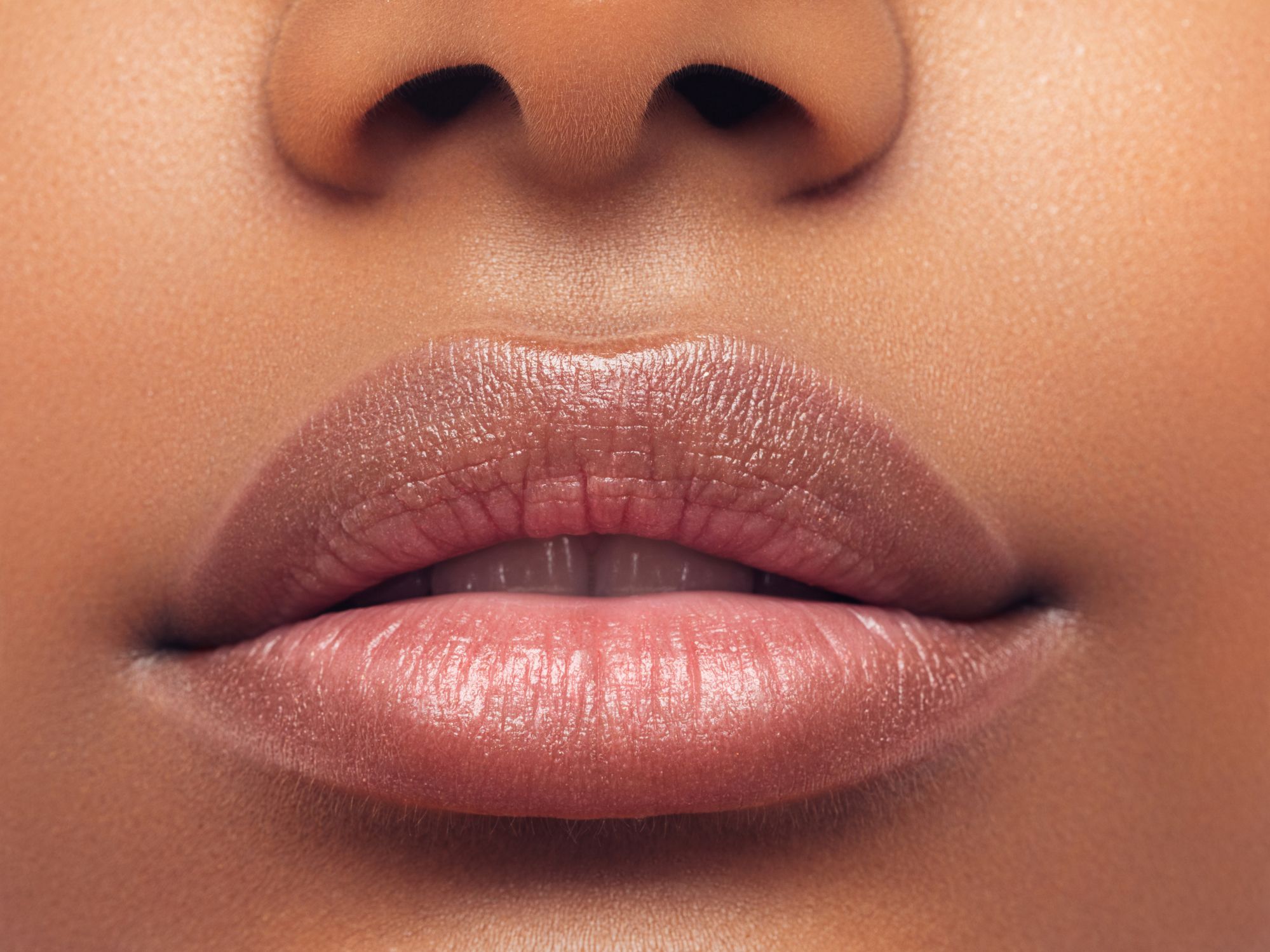
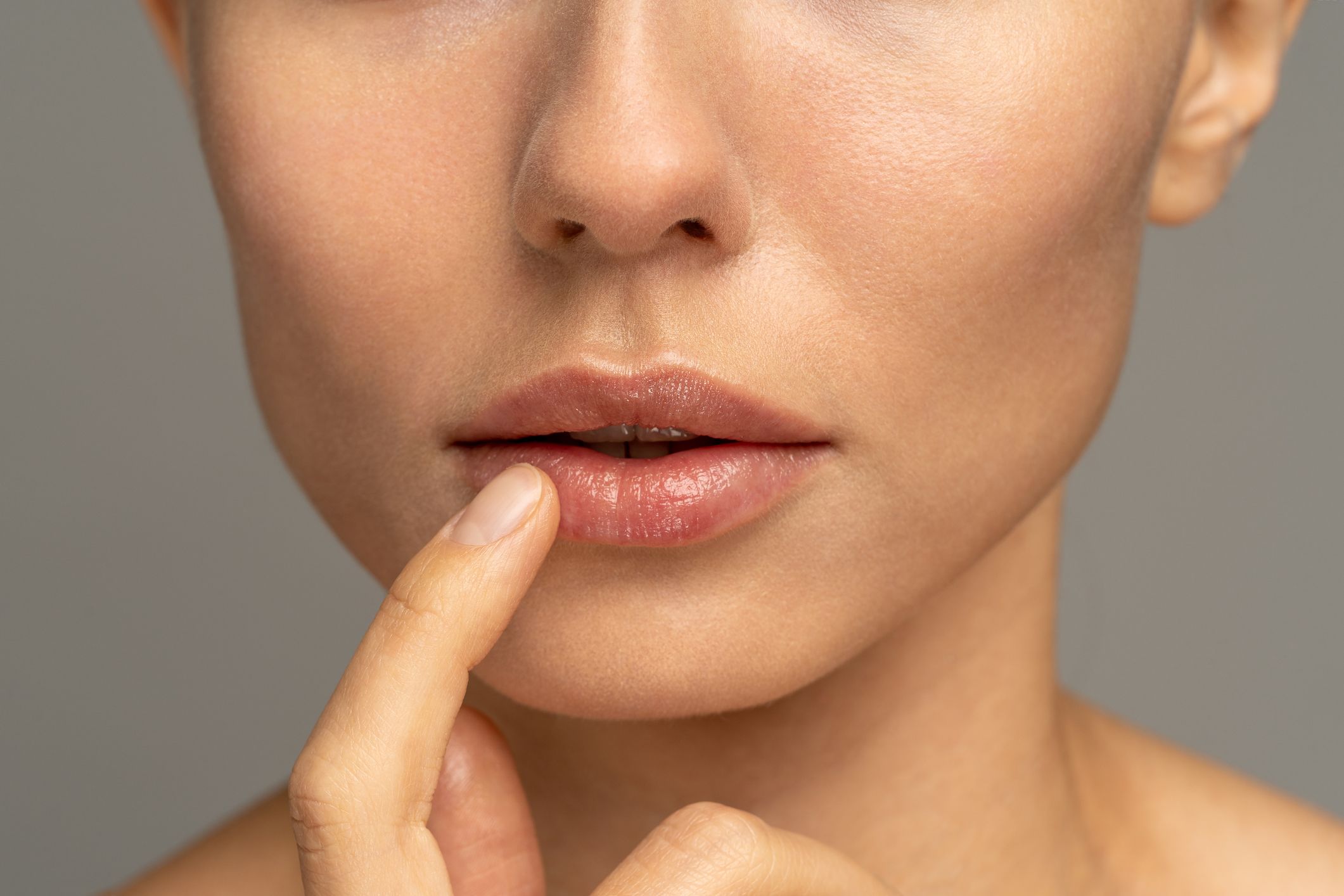
The Eucerin Solution: Lips
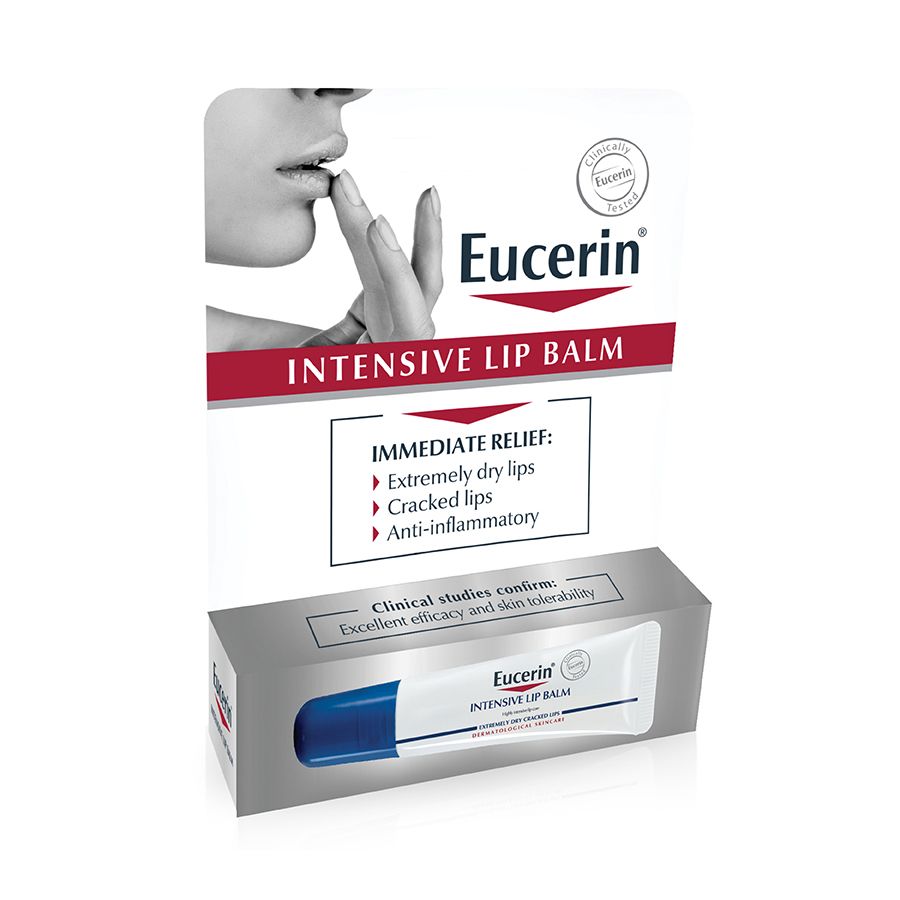
Aside from daily, preventative care, once your lips are dry or cracked, you’ll need a moisturising lip balm that is clinically and dermatologically proven to soothe and protect your lips, and that is suited to your skin type and particular needs. Eucerin Intensive Lip Balm instantly soothes and moisturises not just your lips’ skin, but the sensitive skin around your mouth, where cracking and sensitivity can spread from your lips. It’s sealed with a kiss thanks to:
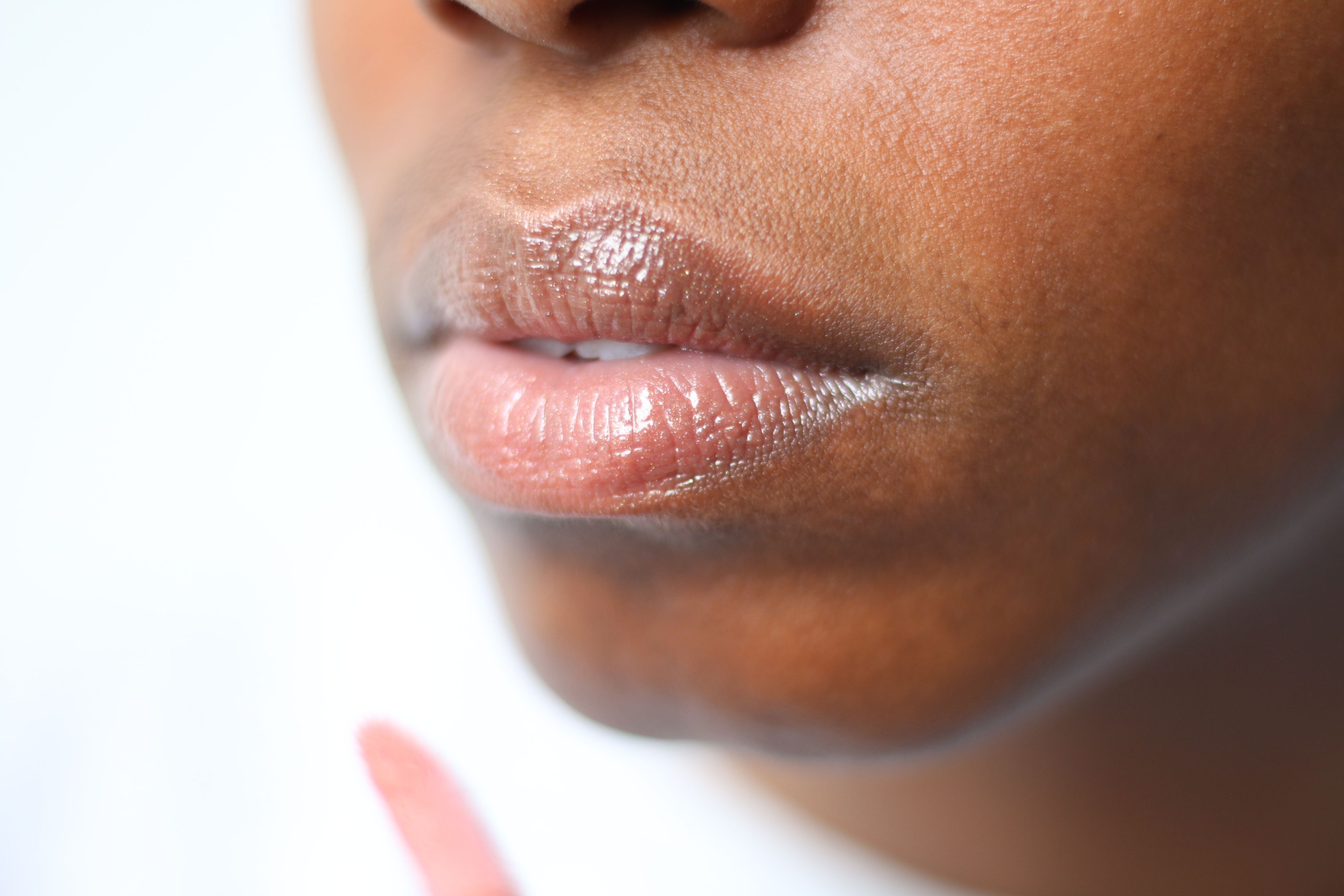
Photo by Melissa Di Rocco on Unsplash
Photo by Melissa Di Rocco on Unsplash

Aside from your products and skincare routine, here are five more things that you can do every day to care for your dry skin (and why they’ll help):
1 Protect against sun-exposure: After cleansing and moisturising, our next concern is sun protection. A small dose of sunlight can have a positive influence on our mood, and limited sun exposure is essential for our bodies’ production of vitamin D, which is essential for bone remineralisation, muscle and nerve function, and supports the immune system. But over-exposure is deeply harmful to the skin, and especially damaging to dry skin. UV light increases the rate of skin ageing, and skin ageing can increase the risk of dryness. Here are some quick tips for having fun in the sun:
- Apply sun protection every morning after your normal moisturiser.
- Reapply your sun care regularly to maintain the level of protection and to avoid sunburn.
- Reduce sun-exposure by wearing protective clothing.
- Use sun protection products especially developed for dry skin’s needs, such as sunscreens that do not contain irritating perfumes and colourants, as dry skin is prone to irritation. The Eucerin Sun Protection range includes products suitable for everyone, from babies and children, to those with allergy-prone skins, sensitive skin, dry, ageing skin, and even those who need oil control products.
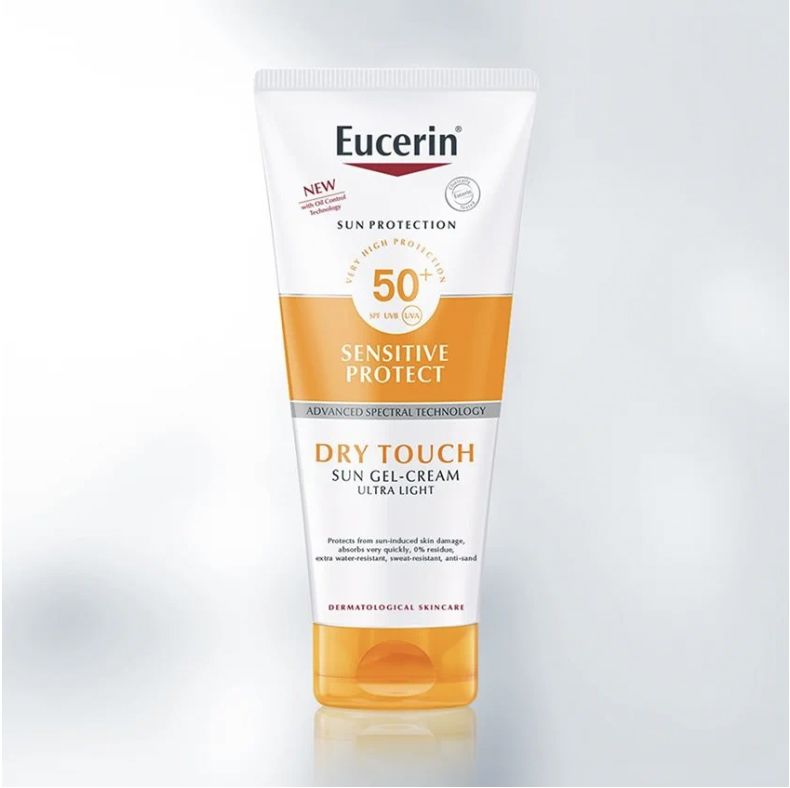
2 Avoid scratching: The instant relief is not worth the agony! Scratching further damages the stressed skin surface and can even lead to bleeding, vulnerability, infection and scarring. Instead of scratching, try holding cold packs wrapped in cloth against the skin to numb the area, try acupressure points, or apply a thick moisturiser that contains ceramides. Speak to your doctor for more tips, including how to avoid scratching in your sleep.
3 Avoid fragrances: Along with ditching fragranced bath and body care products, replace your laundry detergents, dish soaps and household cleaning products with products suited to sensitive skin. And wear gloves while tackling household tasks involving any harsh chemicals.
4 Use a humidifier: This is especially helpful in drier climates, especially during winter. Set up the humidifier in places you spend the most time in, including your bedroom and office.
5 Choose natural fabrics: Wear clothes made of natural materials, like cotton and silk, that do not irritate the skin. Even though wool is natural, it can irritate the skin and should be avoided.
